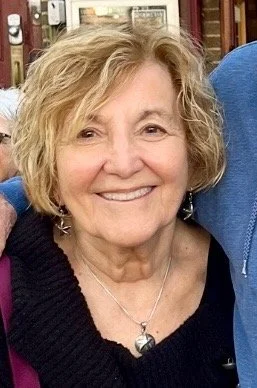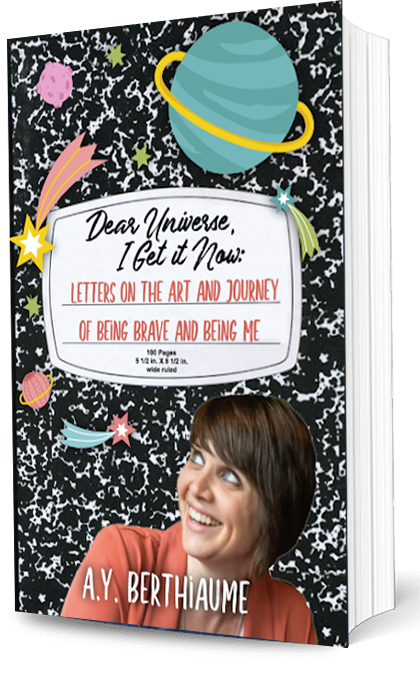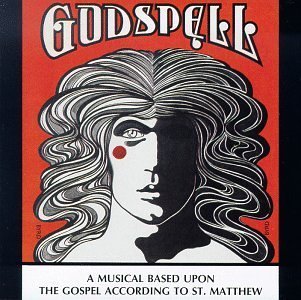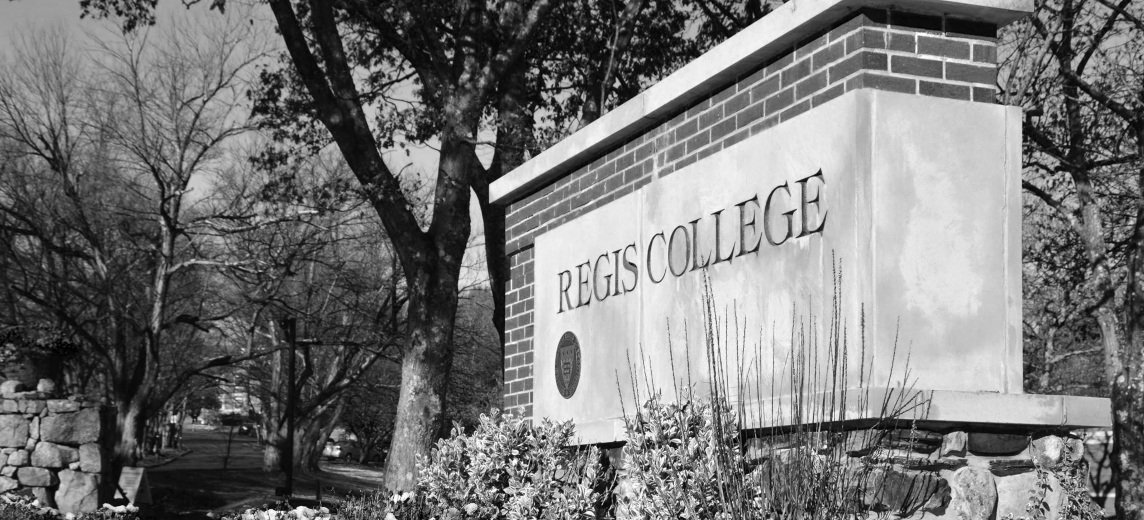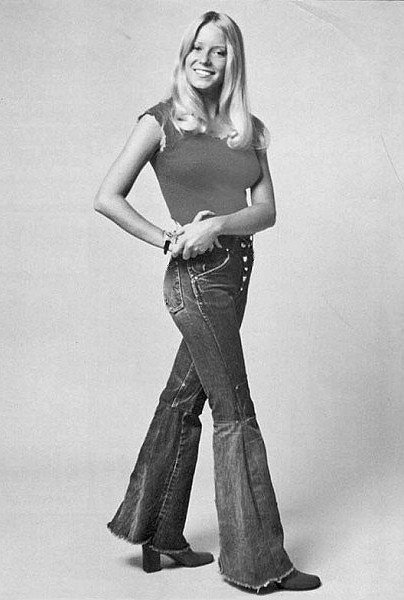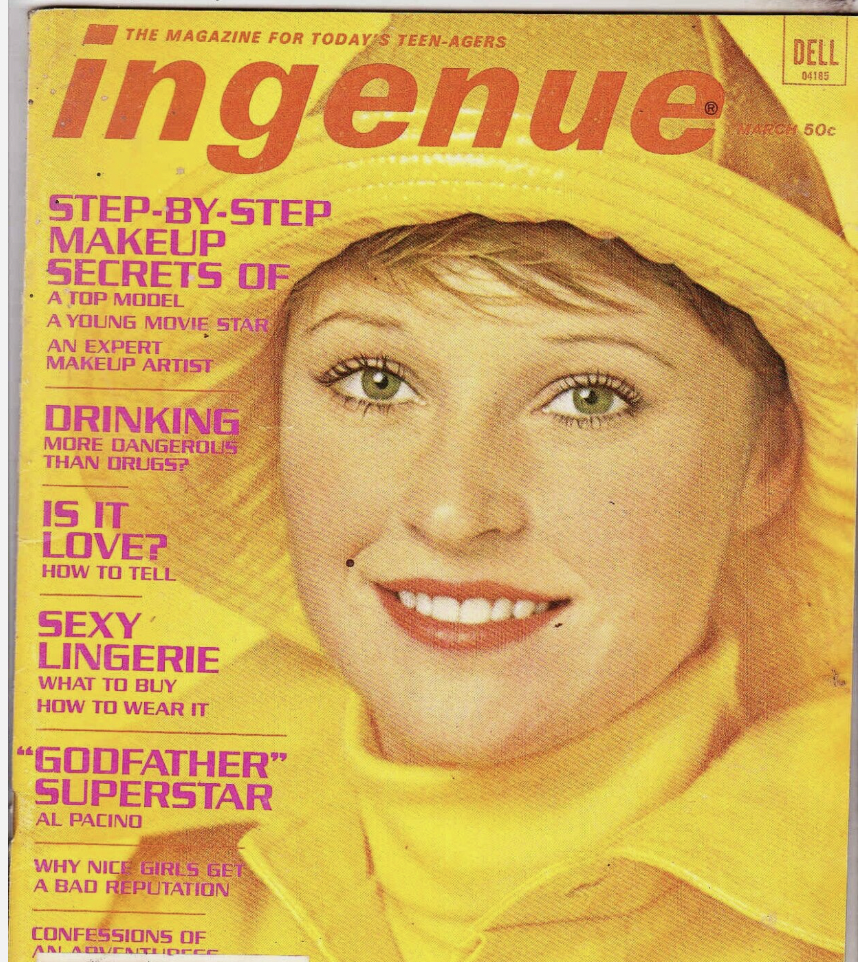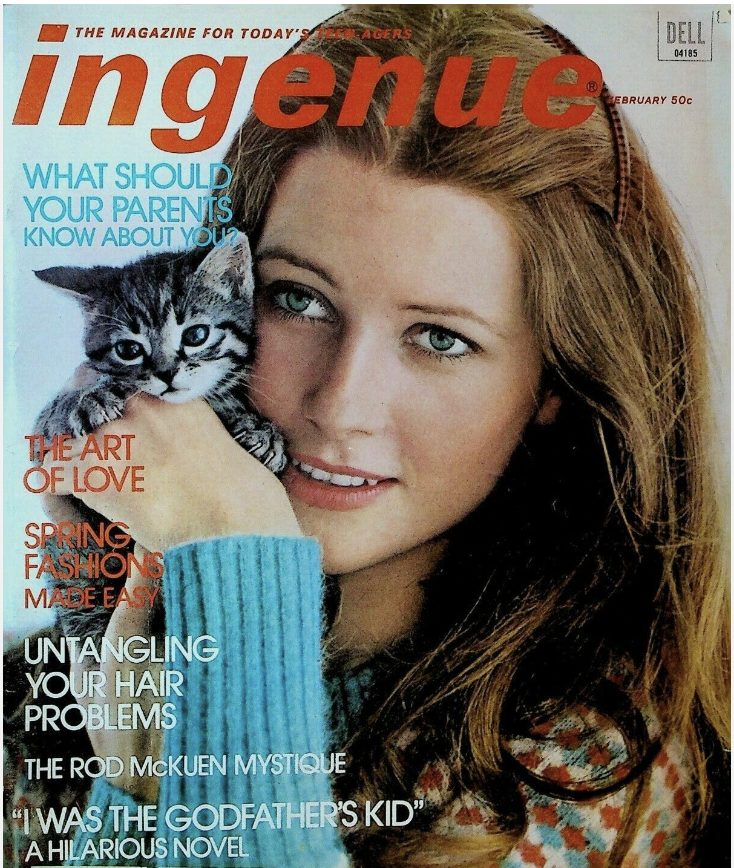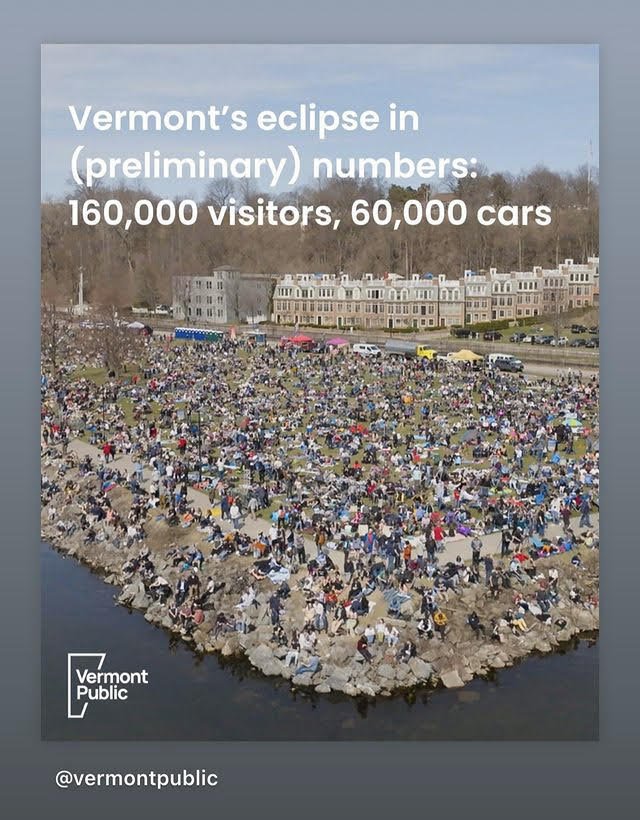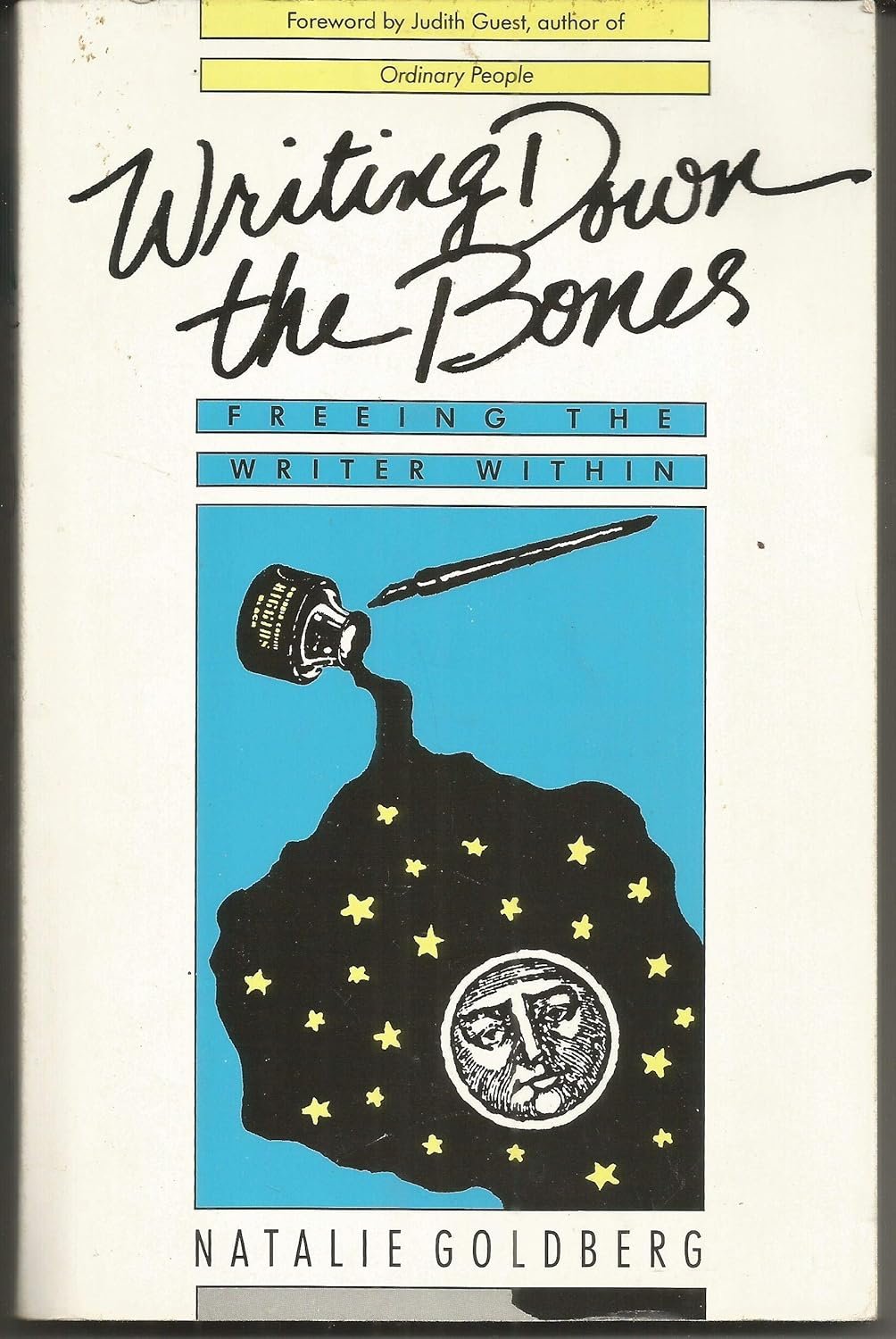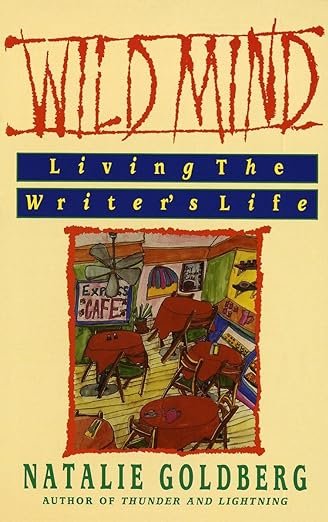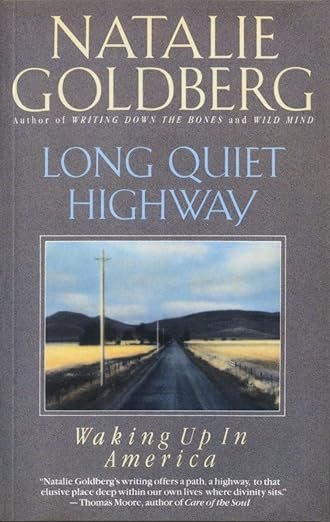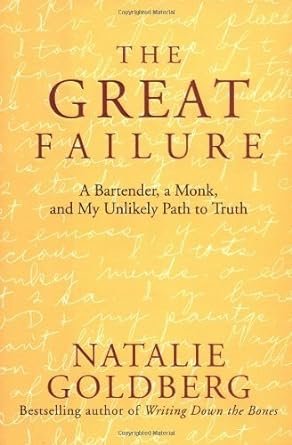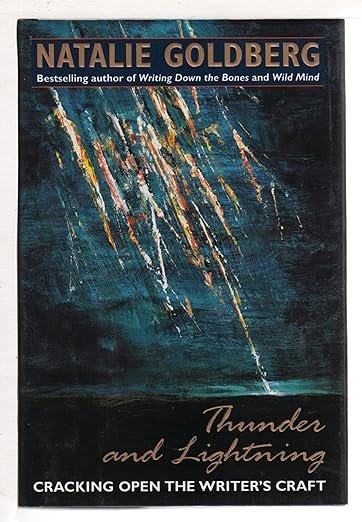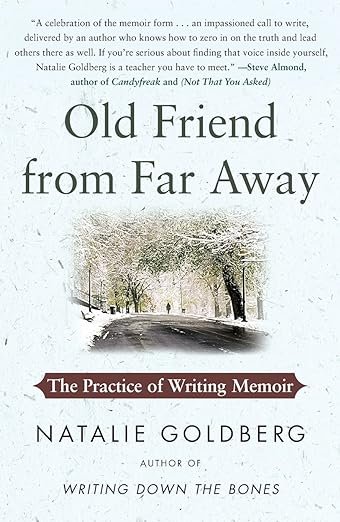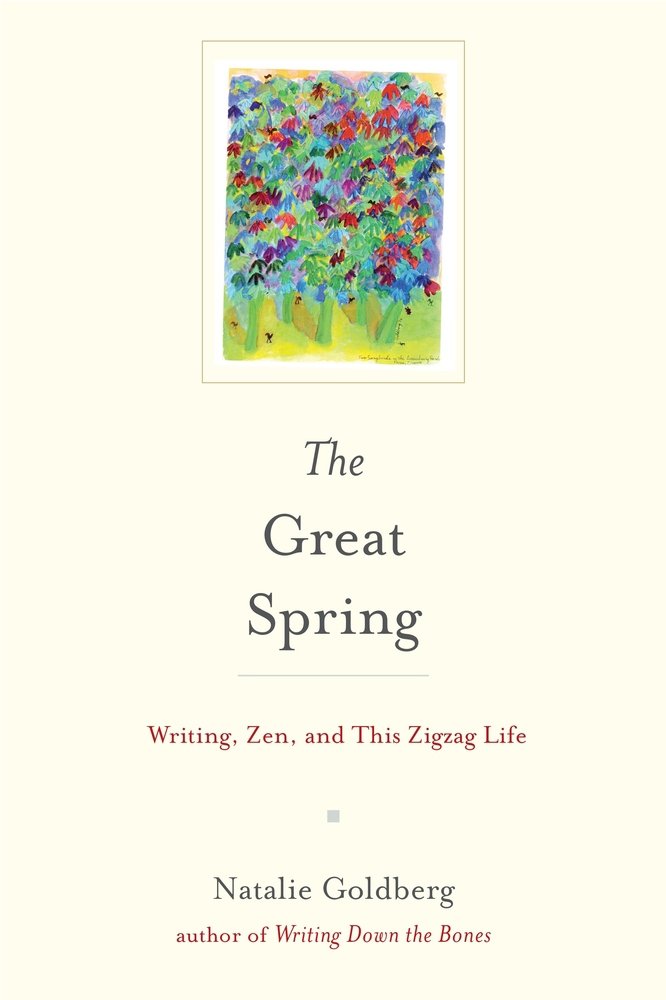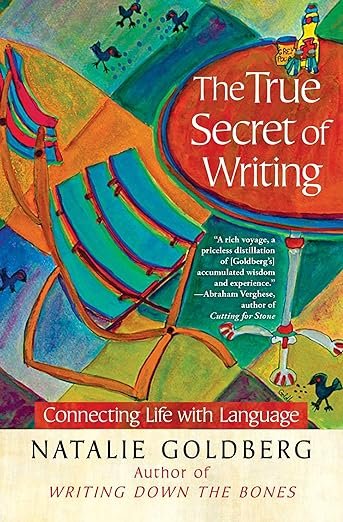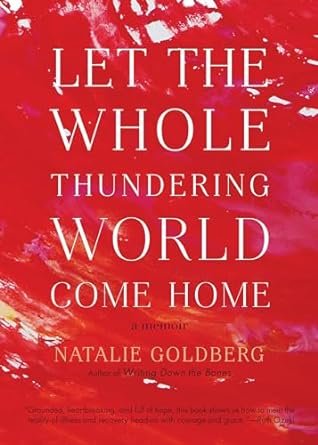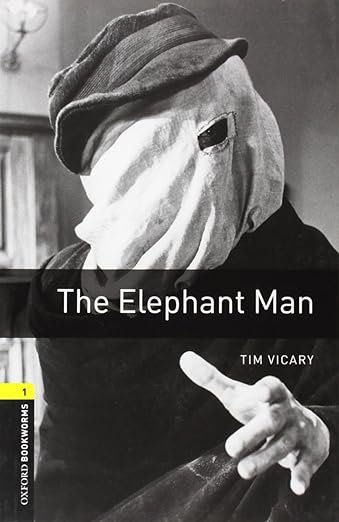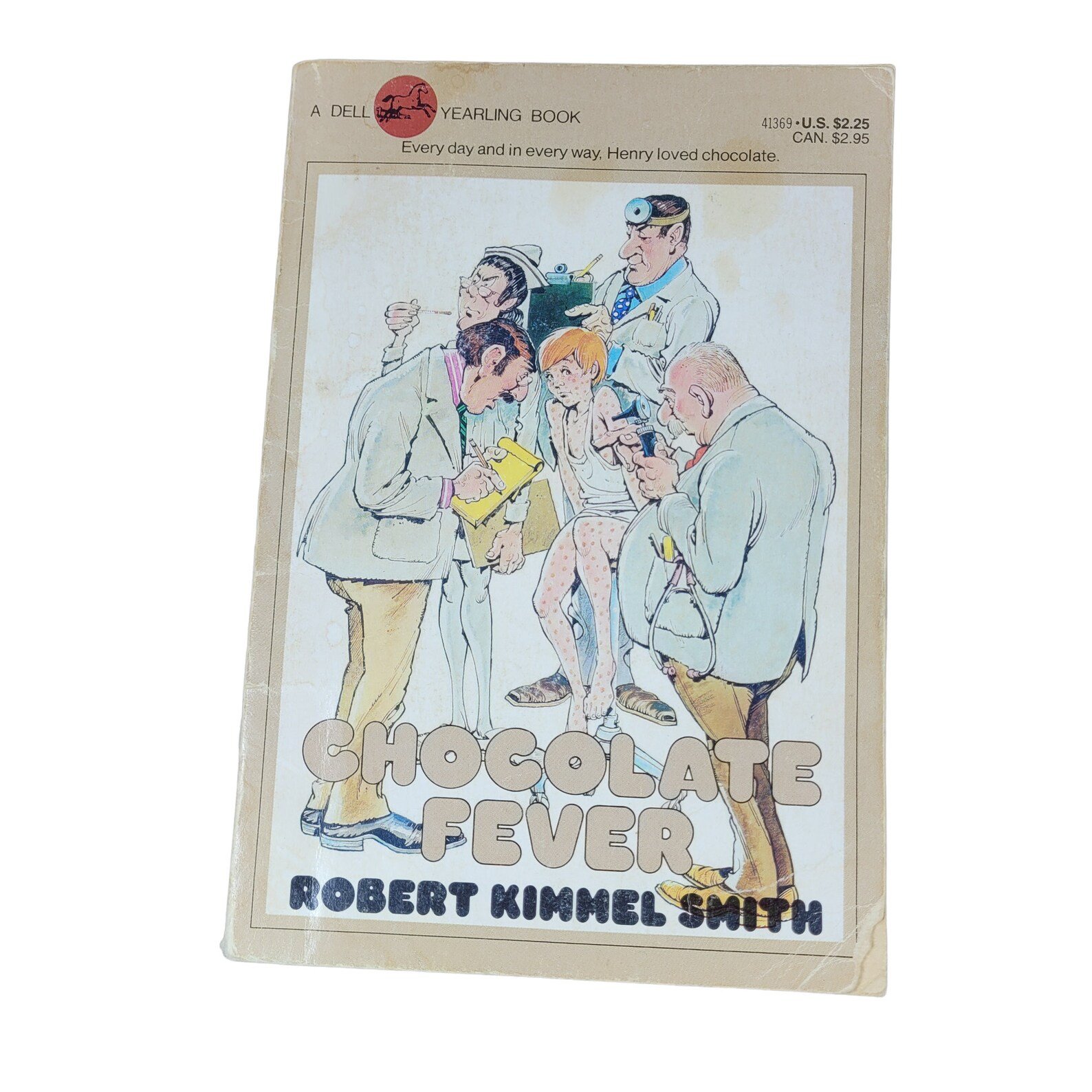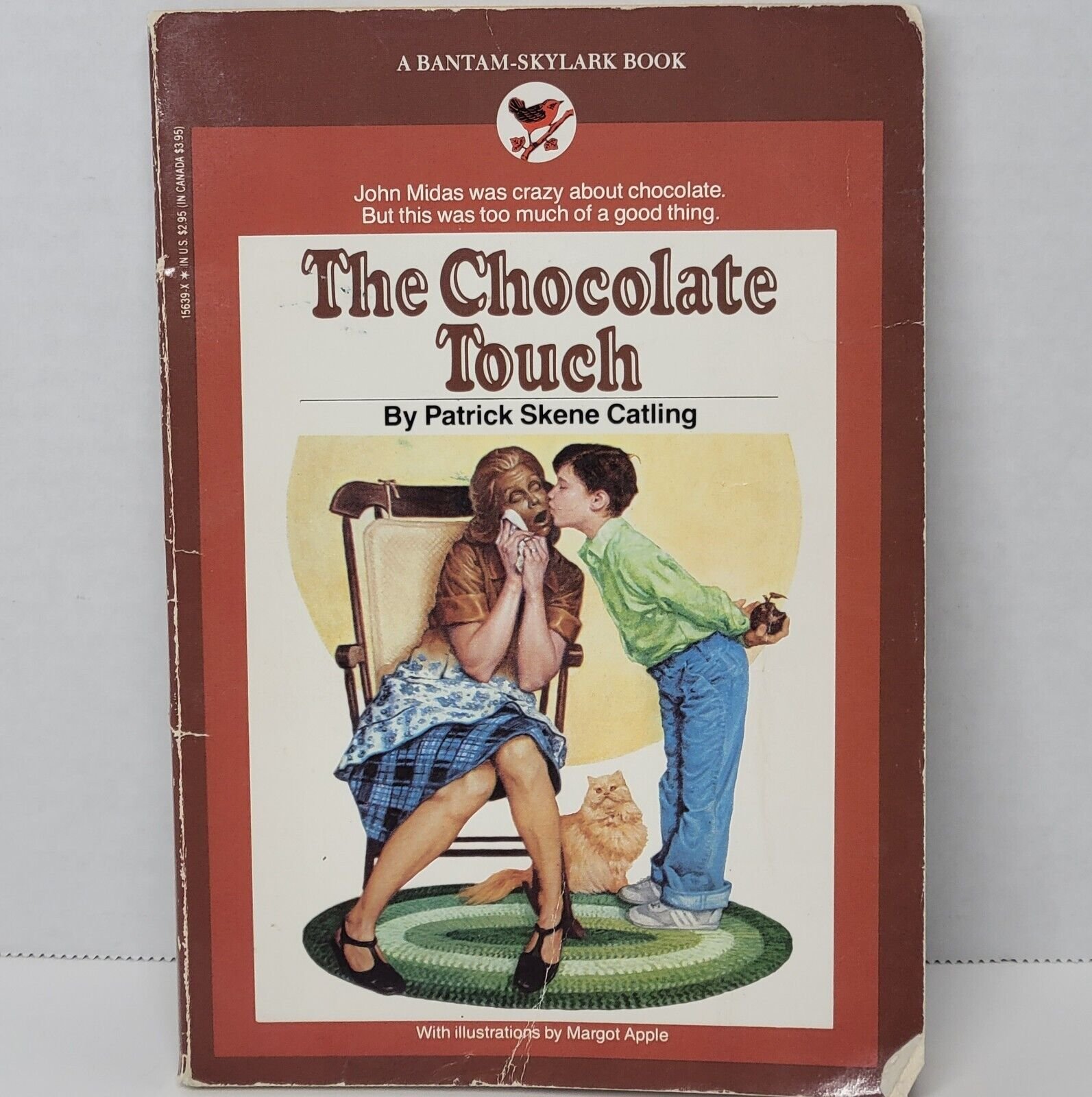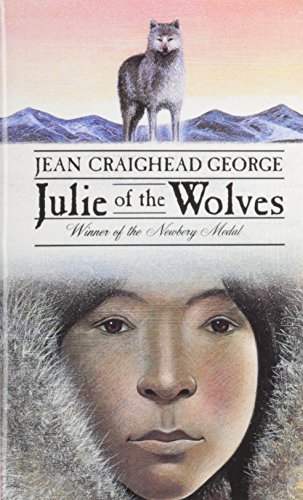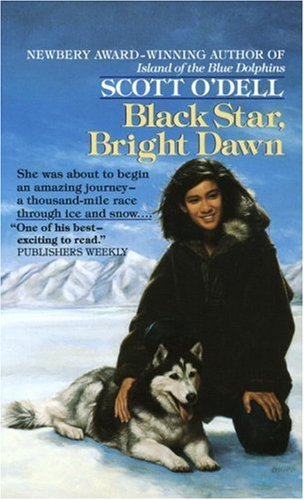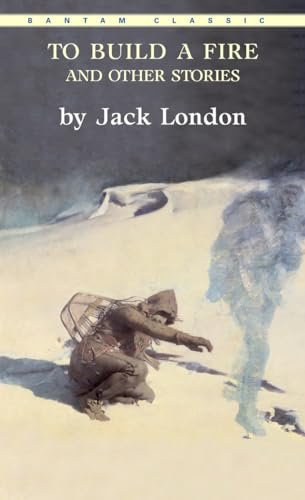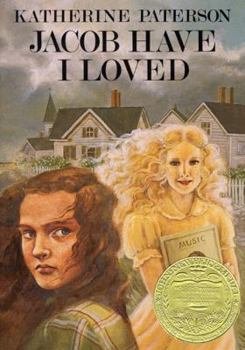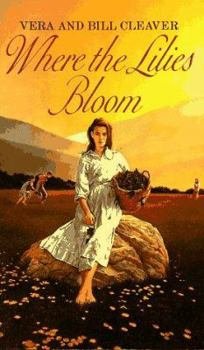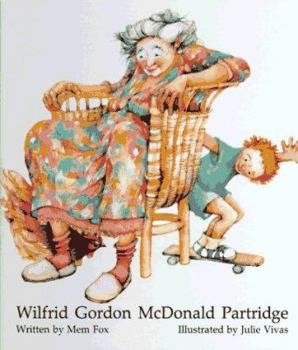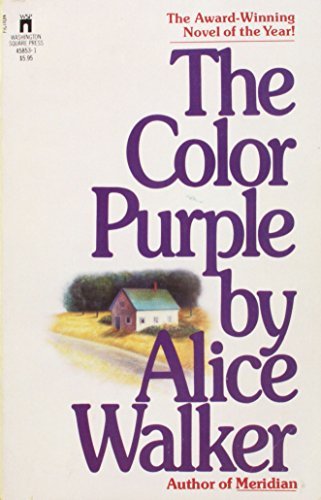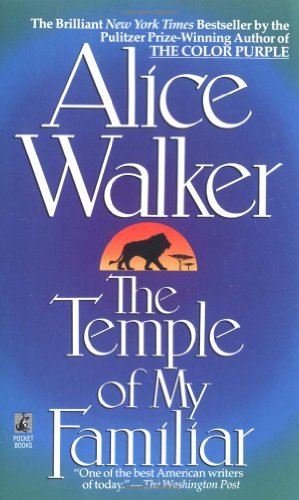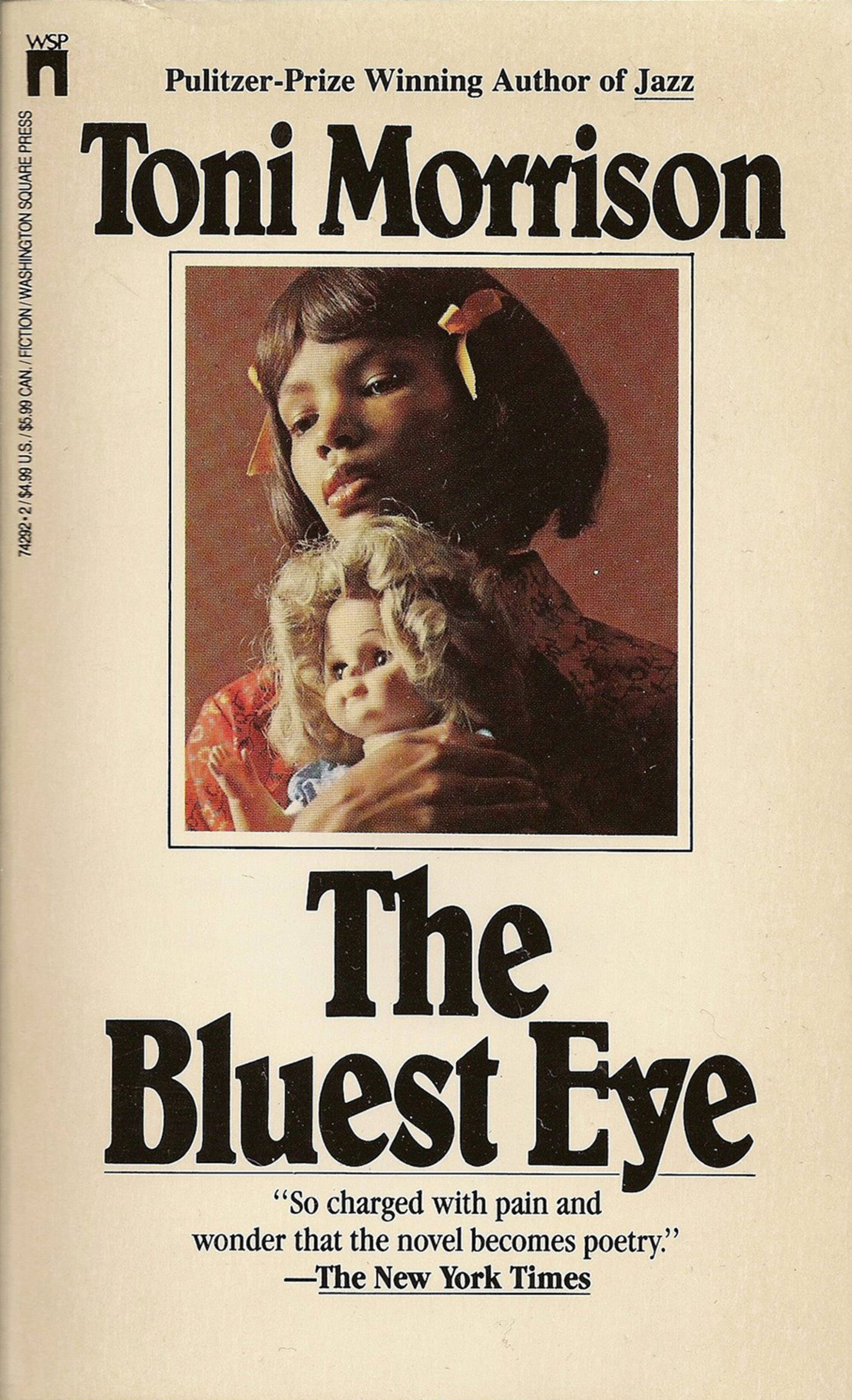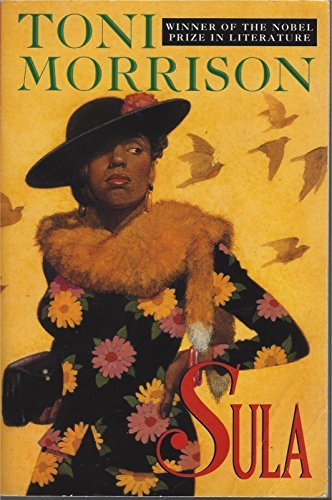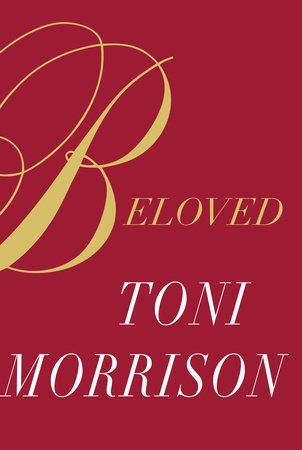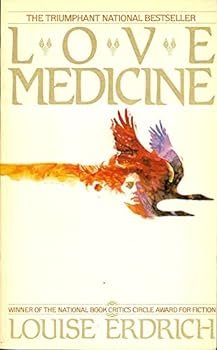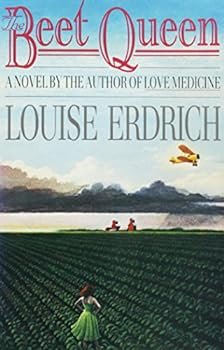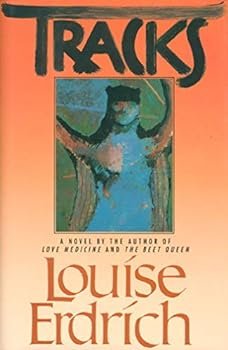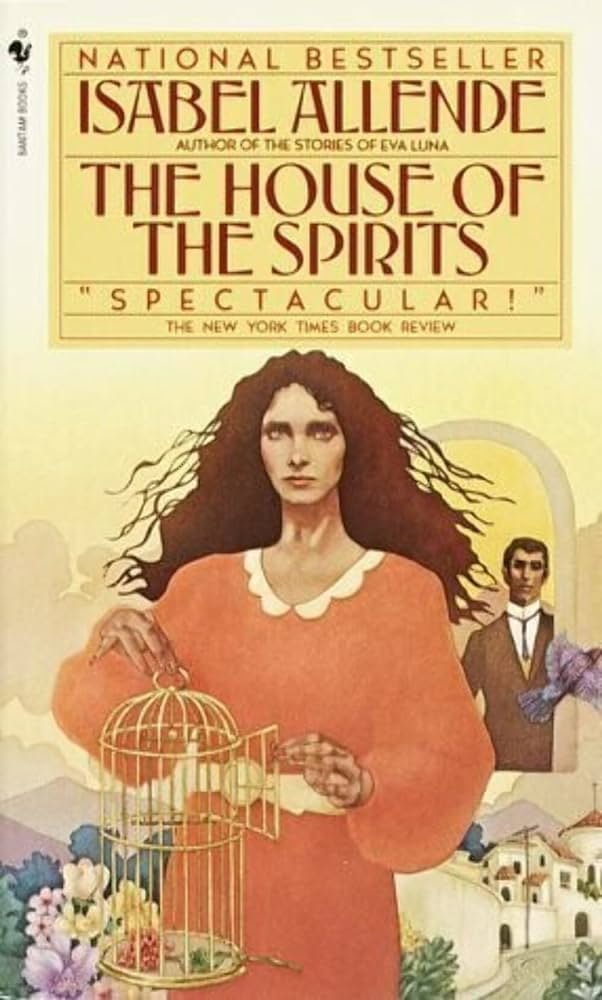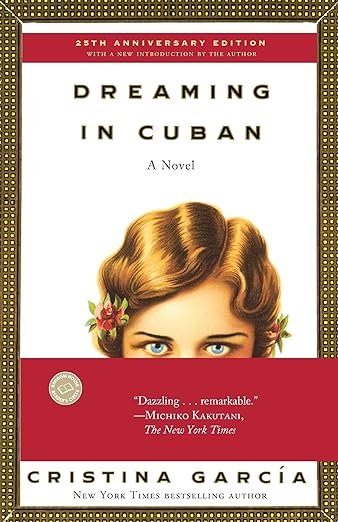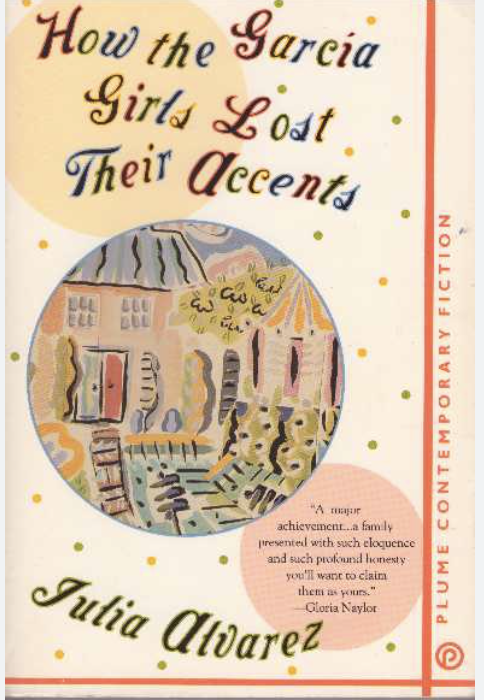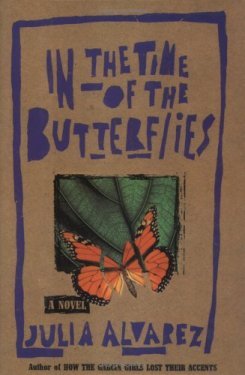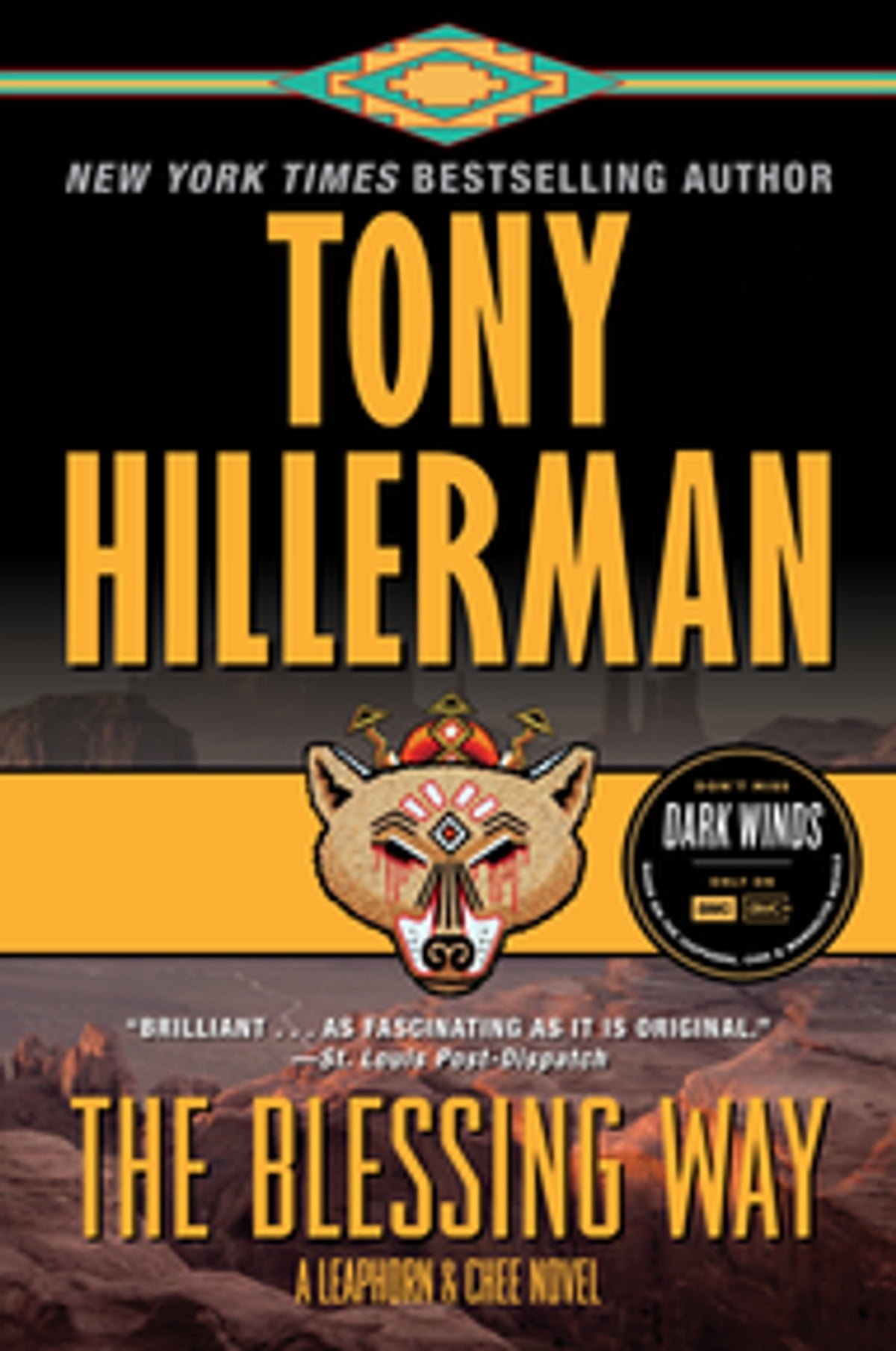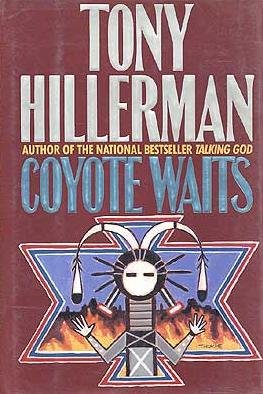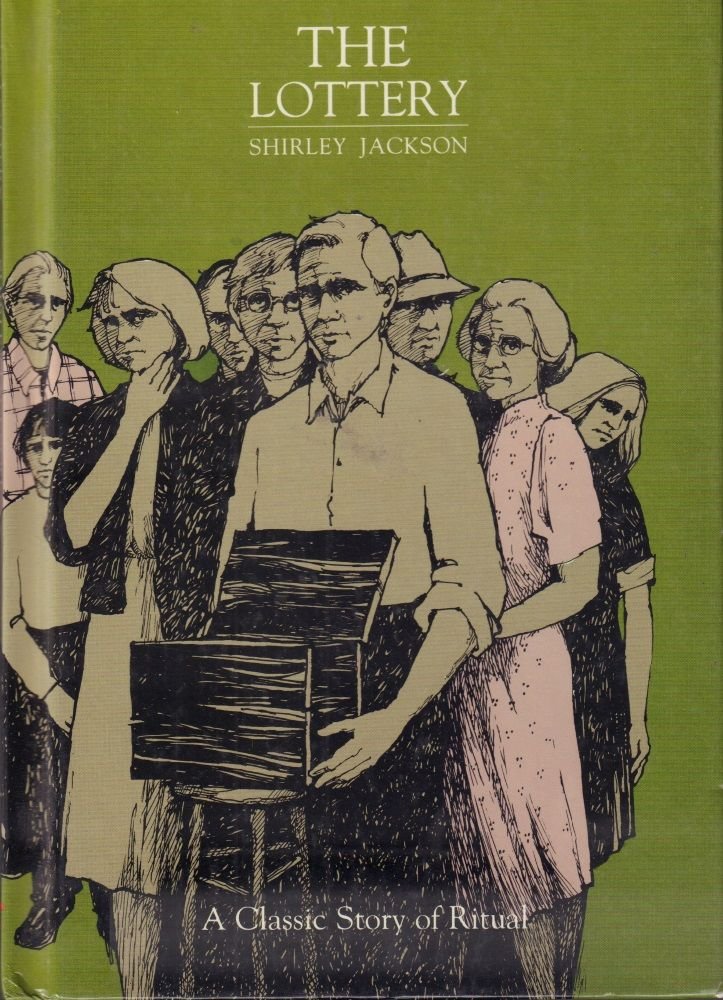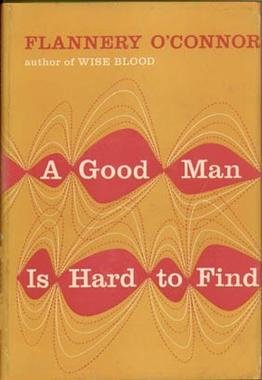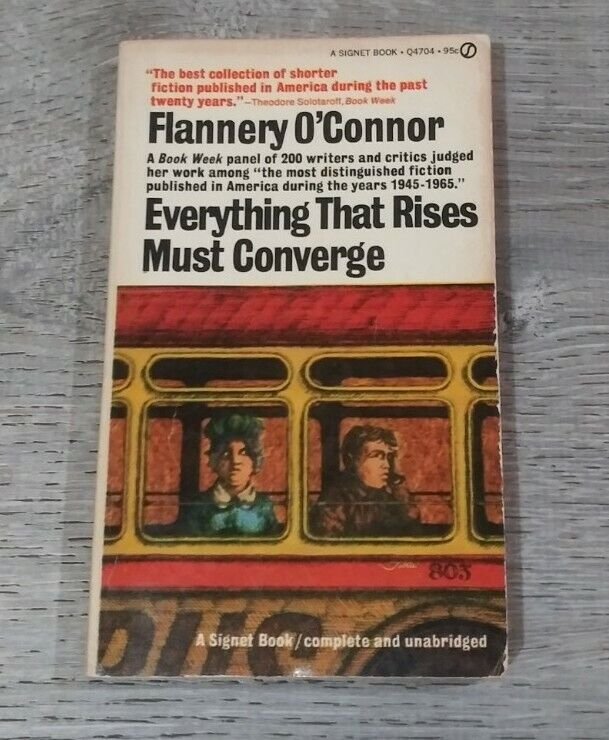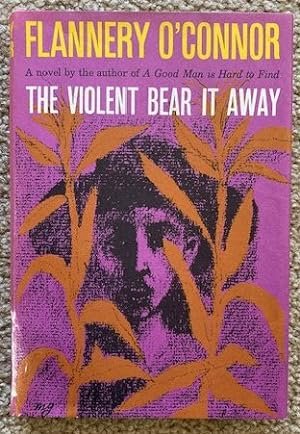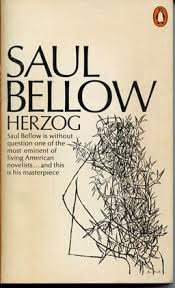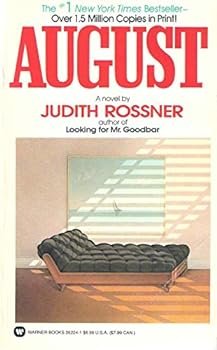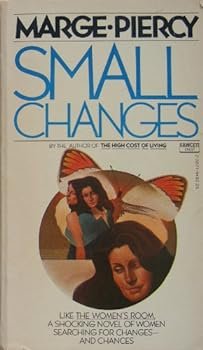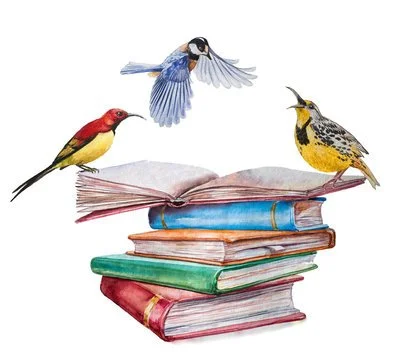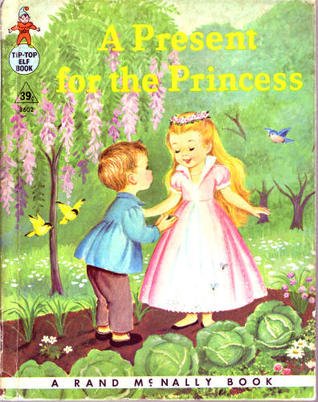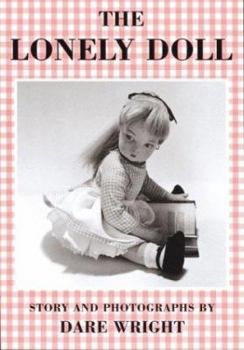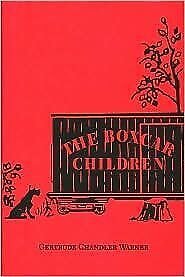These days…
Apocalyptic, dystopian storylines have always fascinated me. But I never thought in my lifetime, in the United States of America (that feeling of American exceptionalism used to be hard to shake–not anymore), I would be living one of those storylines.
March 11, 2025 marked the fifth year anniversary of the World Health Organization’s declaration of COVID-19 as a pandemic. I actually wrote this piece a year ago on the fourth anniversary. I don’t think I will ever shake the vigilance that the pandemic instilled in me. The political climate in my country these days has given rise to many of those same feelings of uncertainty, protection, survival, and fear for others. I’ve reworked the piece a bit to acknowledge this fifth anniversary.
I still spend some of my lost-in-thought time thinking about the pandemic. It’s baked into my recent past, my present, and it continues to loom large. I am drawn to pandemic-themed literature, its own new genre. Living through the worst (let’s hope) of a pandemic is one of my own life stories, always present, both in memory and impact. Just as my mother could never shake the scarcity thinking as a child of The Great Depression, I will probably be waiting for the next pandemic well into my eighties, or sooner. Ironically, the leadership now is the same as it was then, only more awful and more destructive than we ever thought possible.
Apocalyptic, dystopian storylines have always fascinated me. But I never thought in my lifetime, in the United States of America (that feeling of American exceptionalism used to be hard to shake–not anymore), I would be living one of those storylines. Despite my fascination with post-catastrophe, Orwellian drama, I was no better prepared for the realities of a pandemic than I was for living out the novel 1984. When I replay the last days of December 2019 to the present, they are recalled in sped-up black and white moments of 30 second video snippets, blurring together. But they slam to a cold stop in March in 2020. In March, the images are in sepia-toned slow motion, simultaneously real, surreal, and frightening.
In the winter months leading up to March, the mysterious virus originating in China was just a quick sound bite on the news. I scarcely remember even discussing it. Christmas came and went and 2019, which had been one of the worst years of my life, finally came to a close. I had wanted that year to end so much. Be careful what you wish for.
Work resumed in January with the usual colds and flu in the office. At home, life was books and hot chocolate, cocktails on the weekends, dinners out, texting friends to make plans, shopping, and waiting for snow days – the typical ways to pass the winter months as we looked for signs of spring. The news stories continued through January and February. Were we still ignoring them? Many of us didn’t trust the president (with good reason), so what should we think? Wait for facts from the experts, yes, that’s the plan. And then it was March. That first week of March I went out to dinner with some women administrator friends. There were a few nervous jokes, several “you don’t really think” questions, but dinner seemed unremarkable that night. But looking back… looking back can change every thought, every action, can’t it? It can turn a benign pleasant occasion into an unthinkable turning point.
As we were leaving the restaurant, I waved my friends away having seen some of my former students, now grown women, dining in a booth. Leslie, who was now a teacher, invited me to sit. I squeezed into their booth to chat for a few minutes. As I was getting up to leave, we made a joke about fist bumping a good-bye. Instead, impulsively I gave her a hug. Other than my husband, she would be the last person I hugged for a long, long time.
During the next two weeks, things began to spiral. On March 11, 2020, the World Health Organization declared the virus a pandemic. In the next few days, the world shifted tectonically under my feet. My government had ignored the slippery pebbles of warning underfoot and the avalanche had begun. A whole new vocabulary invaded our daily communications: quarantine, isolation, community spread, and the scariest word of all, ventilator. Our governor ordered schools to close no later than March 18. On Sunday, March 15, our district leadership team met for the day to figure out how to communicate an unprecedented closing to our students and their parents, provide regular online education through engaging lessons in K-12, distribute a laptop to every home and troubleshoot their wifi access, and feed children at least two meals a day through pick up and delivery 5 days a week. The team met online every day. Google Meet and Zoom became our “office” and our lifelines. The return date was extended over and over, and by April we knew we would not be coming back.
Of course there were our own lives to prepare for, too. How do you prepare for something you couldn't even imagine? It seemed like each day things got scarier and more confusing. An acquaintance's father, who had attended a UVM basketball game on March 10, contracted COVID at what became Vermont’s first “superspreader event.” He died by the end of the month, along with several other elderly fans. On Thursday, March 19, I went to all of our district’s schools to help pass out lunches and laptops to the queues of families in the parking lots. I brought homemade chocolate chip cookies to the custodians who had been working almost round-the-clock to disinfect everything before the buildings closed. On Friday the 20th, my husband and I gassed up our cars, loaded up on groceries and necessities, and stood in lines rivaled only by the day before Thanksgiving or Christmas. I edged my scarf up over my mouth and nose. Trust was as scarce as certainty as we prepared to hunker down. The images on the news were horrifying.
Time moved us on as it does. It took us a few weeks, then months, and finally years before we accepted this virus wasn’t going away. Life as we’d known it for so long would most likely never return.
As we mark the fifth year anniversary of the declaration of the pandemic, the “pandemic” may be over, this virus thing is not. It’s part of life now. Yet I still struggle to describe it as normal or even “the new normal.” I will mask again in crowded spaces, test regularly if necessary, and get vaccine boosters (fingers-crossed) when recommended for my age group, but I’m not sure if I ever want to feel that’s normal. That March in 2020 propelled us into stages of shared grief for what was and what might no longer be. Elizabeth Kubler Ross describes those stages as a framework for learning to live with “the one we lost.” The pandemic laid bare layers of complex grief that I will reflect on for years to come. As I peel back those layers, I know that the “one I lost,” to use Ross’s words, wasn’t a person (for which I am infinitely grateful). What I lost was my naive, preemptive approach to that “one wild and precious life” Mary Oliver gives a name to in her poem, “The Summer Day.” The poem’s urgent “what is it you plan to do” with that life remains not only the ultimate question, it is the story, the lesson, and perhaps the vigilant rallying cry for the collective survivors of the pandemic.
“I’ll Have What She’s Having”
If aging is what my friend Maddie has been doing—getting more fabulous and wonderful with each year—then yes, “I’ll have what she’s having.”
To mark a big important idea like International Women’s Day today, I will take this opportunity to honor it in a very personal way by celebrating my friend of over 40 years, Maddie. As we age, our women friends become even more central to the joy in our lives, and the appreciation we have for them seems to soar. Last fall, our Women Rowing North leader, Helen, gave our alumni group the writing topic,“Who is that Older Woman?” I knew when I read one of the prompts, “Is there someone older than you who makes growing older inspiring? Who is your aging idol and why?” that I would write about my dear friend, Maddie. The idea of having an “aging idol” as we move into our elder woman years (thank you writing group fellow, Jennifer, for such a beautiful turn of a phrase) is just plain smart. Having aging inspiration can help to keep this last major life journey both positive and forward-focused. While many women may feel their best years are behind them, an aging role model can show you something very different.
In her Medium post, Who Are Your Role Models For Successful Aging?, M. Elizabeth Blair sites research from Blue Zones at bluezones.com that suggests that having aging role models with certain attributes can positively affect your own views on aging. My friend Maddie’s positive attributes are very aligned with the “Blue Zone’s Power 9.” Most importantly, Maddie has always been such a powerful role model for me as an elder because she has long possessed characteristics that focus on good health, a strong sense of moral purpose, and a loving friendship community of women. I have learned from her modeling for over 40 years now, and happily, I’m still learning.
You may remember the scene from When Harry Met Sally where the woman in the deli, after watching a stellar performance by Sally, tells the server, “I’ll have what she’s having.” I thought I’d borrow the line as the title for my essay, and use it in a different context. 😉 If aging is what my friend Maddie has been doing—getting more fabulous and wonderful with each year—then yes, “I’ll have what she’s having.”
I’ll Have What She’s Having
At 67 years old, my mornings are both comfortably familiar and pointedly uncertain. Happy as I am to simply wake up, it’s not long before the bumpy migration of cells in my aging body commands my attention. Pain over here; spasm over there. I have arrived at that space in life that reminds me I’ve lost valuable time in caring for my body, and now must play a frantic game of “beat the clock.” One glance in a mirror, and I am quickly reminded that increasing amounts of wrinkling, sagging skin is slowly mummifying me in flesh-colored crepe paper.
Mercifully, a morning text distracts me from an unhealthy relationship with the bathroom magnifying mirror. It’s Maddie from Philly. Now there is someone with gorgeous skin. In the past I treated my skin like the interior of a car, a generous swipe of an Armor All-like wipe was just fine. Since we met about 40 years ago, Maddie practiced an impressive self–care routine, long before it was its own industry. Maddie is on my mind so often as I stumble through this aging journey. She makes me think about the many aspects of life that bring me a sense of joy and purpose as I age, that were inspired by the example of women friends, like Maddie.
At 82, Maddie is still one of my most beautiful friends. Hair styled in an edgy cut, her lovely Greek/Armenian features are still sharp and distinctive against that smooth, wrinkle-free skin. I am in awe of her timeless beauty, generous spirit, mental sharpness, and unflagging resilience. A few years ago, Maddie lost her daughter unexpectedly. It is something that could have broken her as she approached 80. But she graciously accepted our love and support; she let us in. It would have been so easy to shut the world out during such heartbreak. That experience with her taught me how important it is to open up my world to others as the years collect. So I nurture my friendships now, and I cling to moments connecting with Maddie during what could be the final phase of our friendship.
Fifteen years older than me, I cannot remember a time when Maddie wasn’t a role model in my life. When we worked together in the 80’s and 90’s, snatches of time in her crow’s nest office were filled with discussions about our students: sharing observations, celebrating achievements, and sometimes sobbing over failures and planning to address looming fears. From Maddie, I received the sage advice my younger self desperately needed, along with an introduction to the ethics of care and how to live a purpose-driven life as an educator. Admiration and inspiration characterized those seminal years of friendship. We also spent countless hours just talking while sharing meals, cups of tea, and glasses of wine. Our ups and downs were chalked up to growth experiences, and Maddie was quick to forgive whenever I needed it. And there was laughter–so much laughter and joy.
Now, about once a month, I see Maddie over Zoom during our book group and catch-ups. My dear friend does show some signs of aging, but remarkably few. I don’t really see them. As I listen, my mind wanders to a continuous loop of memories from our shared past. Each frame in time is awash with hues of irresistibly vibrant colors. Rich amethyst-toned purples, brilliant azure blues, vivid fuchsias, lemony yellows, and coral pinks. Maddie always dressed in striking, saturated colors, full of energy – she simply radiated. I remember in my thirties shrouding myself in mostly black clothes, thinking how sophisticated and thin I must look. Part of me envied Maddie’s colorful silks and bold rainbow of natural cottons. I remember asking her about her love of color. She said, “When you get to a certain age, you’ll love colors.” Recently I purchased a bright periwinkle cotton sweater and thought, “Maddie would love this.” From her wild hair to her artisan earrings, Maddie was teaching me hippie-chic before boho even became “a thing.” So despite the difference in our ages, Maddie was always my coolest friend, and now, the coolest octogenarian I know.
Being with Maddie has been an intellectual field trip–the best liberal arts education I could have had. Through our friendship she shared provocative ideas, progressive ideals, and a love of good books, all giving me so much to aspire to. Ann Patchett wrote, “Some of us have lives that revolve around the humanities the way the planets circle the sun.” Maddie shared such a life with me. It was a glorious time to be young and have an older, more knowledgeable and worldly friend to pester to tell me everything about how she knew what she knew.
On Maddie’s fiftieth birthday, she was a bit blue. Still in my thirties, the arrival of my own half century mark seemed far away. “You’re 50 Maddie,” I said, “just like Linda McCartney. Two of the coolest women in the world are 50, and YOU are one of them!” I knew if that was 50, I had a lot to look forward to. Maddie sailed through her sixtieth birthday, and I remember thinking if that’s 60, sign me up. In her sixties, my forties, we went to plays together, lectures at the university, and shared a love of poems and quotes through sending arty, “no occasion cards” to each other.
Around Maddie’s seventieth birthday, another friend and I visited her at the school she was still working at as a guidance counselor. My friend asked her if her colleagues had made a big deal about her seventieth birthday, which had just passed. “When you're seventy and still working, you don’t call attention to your septuagenarian birthdays,” she smirked. Made perfect sense to me.
I look at Maddie now, in her eighties, and realize I look up to her and need her as much as I ever did, perhaps more. Thanks to Maddie, I am navigating this time of my life full of resolve to care for my health, cultivate a headspace full of rich and engaging thoughts and ideas, read voraciously, to cherish my friends, and finally welcome some color into my life. Connecting with Maddie makes me realize the memories of a shared past were the groundwork for a fulfilling present. Gratitude doesn’t seem adequate. Lives I thought would be forever entwined with mine through lovingly bound threads of shared experience are starting to unravel with time. I know time is not the friend of people my age, and it is even more fickle when you are the age of my dear friend, Maddie. But there is time enough to acknowledge how deeply I appreciate all that Maddie has added and continues to add to my life. Reliving the joys of decades of friendship with Maddie, and all she has inspired in me, is one of the best parts of having her in my life. Now, we can finally age together.
Do you have an “aging idol” ? Share in the Comments.
Struggling to Move Forward
To paraphrase Linus, “I never thought it was such a bad little year.”
One month into 2025 and I’m still struggling to let go of 2024….
I know, I know. I am very late for a 2024 wrap up and a look ahead into 2025. Seems a bit out of whack, but doesn’t everything these days seem more than a bit off? I guess I am giving myself a wide berth. 2025 will not likely kick in for me until February.
Where to begin in reflecting back on 2024… To paraphrase Linus, “I never thought it was such a bad little year.” 2024 tried its best to move along full of hope and promise …and then we hit November. For me, the bottom dropped out of 2024 on the morning of November 6. It was not what I expected, and that would have to be reckoned with in 2025.
But before I get ahead of myself, let’s take a look at some highlights of 2024 (pre-election)— life take-aways from my third full year of retirement.
Winter 2024 (January and February):
Leaving the early winter of any December and ringing in a New Year often finds me at loose ends. It can take me almost all of January to emerge from the deep funk of: 1) the big holiday letdown, and 2) the darkness of winter. No, I don’t suffer the transition from the holidays to bleak winter well. January hurts. I don’t know any other way to say it.
In 2024 I had a goal of working internally to address my anxiety and depression. For the most part I was pretty successful with that, and I knew I had to begin the work in the tough winter months. Eventually, January and February began to feel like hibernation and that felt right. In the first months of 2024 I enjoyed a multitude of solitude and reflection. In 2023, I had made an effort to take solitary winter walks, bundled up against the elements. By 2024, I enthusiastically looked forward to them. January and February were filled with those walks. There was also lots of reading, including books with my little online Book Group — just three old friends who go back almost 40 years, who get together over Zoom to catch up and talk books. Most of these two first months of 2024 were devoted to the indoor pursuit of writing (this blog, Morning Pages, and our Women Rowing North writing group essays). My friend, Lauren, was still traveling to Vermont for work, so there was at least one dinner out together to brighten the winter. And as in every winter since I’ve retired, my trips to Phoenix Books in Essex saved my life during the depths of the darker months.
I do a lot more non-fiction reading in the winter and usually have a little routine (maybe I’ll write about in another blog post). Since I have retired, each February I undertake a “poet study” that I try to finish in April (Poetry Month). The first year after I retired, the featured poet of study was May Sarton. Reading her poetry and especially her journals, in which she chronicled the decades into her eighties, was such an education in aging women, the strength of the creative process, and the battle between craving solitude and feeling abandoned by the personal world you’ve inhabited for so long (now haltingly out of step with the your current reality). My Sarton study took two years. She was such a prolific writer, and there was so much to discover about her and her work the more I researched. Getting back to 2024, in February I became interested in Donald Hall after a trip to a bookstore. I noticed that he wrote essays on aging similar to Sarton’s. I let those life essays lead me to his poetry on his terms. He also led me back to the poetry of his wife, Jane Kenyon, whom I loved in the eighties. I read as much as I could find on her, and will probably continue to study her life and poetry in 2025, as some new-to-me books were acquired in the spring of 2024.
I feel I did my best to get through January and find things to love about February.
Spring 2024 (March, April, and May):
In 2024, I started looking at the seasons through the Meteorological vs. the Astronomical lens, and I have to say, it changed my perspective on the year. One of my goals in 2024 was to be able to shift my perspective to be more optimistic (Reader, you already know how that turned out). This simple shift did help me to get my brain into spring mode regardless of what the thermometer or The Weather Channel said. I will always love the pull of the moon, but breaking each season into three neat and tidy months has somehow helped me to enjoy and appreciate them more.
In March and April I acted on a blog idea that brought me so much joy! I went back and examined my reading life over the decades in a four part series. It was such a fun trip down memory lane, and I learned so much about the goals and dreams of my present self by looking through “my back pages.” The series also gave me the opportunity to celebrate the one year anniversary of The Precious Days blog.
The highlight of the spring had to be the total eclipse of the sun. What a tremendous gift it was to be alive in April 2024 to witness such a phenomenon. I will be forever grateful that on the afternoon of April 8, 2024, I was in my backyard, on my own deck, and in the path of totality.
In April and May, walks with my best friend since age 7, Brenda, occurred almost daily. It was so good to process the world in the fresh air. We made sure to do at least three miles with each walk. In early May we started a Bone Builders class together—a good thing for me with my osteoporosis. I also started volunteering at my local library in May. I have to say, looking back at 2024, this was definitely a highpoint, and I continue to look forward to my morning at the library each week.
By the end of May, spring began to feel like summer. We put out all the outdoor furniture and the garden Buddhas, set up my reading hut, and spruced up the backyard with annuals that complemented our gorgeous perennial gardens (thank you, husband). I was more than ready to greet another Vermont summer. But at the same time, political uneasiness was digging in as it became clear that the man who inspired the violence on January 6, 2021 was once again the choice of far too many people in this country to be the next president. I was losing hope.
Summer 2024 (June, July, and August):
Looking back, my intentions for 2024 to be more patient, more optimistic, and more relaxed would finally be given some space in the summer months. I began June full of optimism, but once again, the politics of the US knocked the rose colored stuffing out of me. So, I tried to go back to church after a decades-long absence. My childhood church had a contemporary reputation of being inclusive and accepting, so for the summer I attended every Sunday. But I didn’t find what I was searching for. There was kindness, but no feeling of authenticity or connection for me. That’s a topic for another time, and probably not for the blog.
My husband and I took lots of day trips to local beaches, some Vermont independent bookstores, and listened to Bluegrass in the evenings at Shelburne Vineyard at least once a month. Those are the kind of summer staples that fuel the soul.
Then on the July anniversary of the 2023 floods in Vermont, our beautiful state was once again inundated by flood waters in Addison, Orleans, Washington, Caledonia, Chittenden, Lamoille, and Essex counties. Then at the end of the month, some counties were hit yet again with flooding. Despite these tragedies for my state, by the end of July, hope for the country was once again in sight. I could feel the optimism surge. I felt joy.
But August knocked me down again — the remnants of Hurricane Debby brought horrendous winds to much of Vermont — we lost power for 26 hours, and we were among the “lucky” ones. Many lost power for days. Downed tree limbs wreaked havoc. The effects of climate change had seriously impacted the summer in Vermont with extreme weather for the second year in a row.
Despite what I remember as a hot, humid August and the extremes of the summer, I ended my summer of 2024 feeling there was so much to look forward to.
Fall 2024: (September, October, November):
In September, I went back to work—just a tiny venture. I just had a few guest hosting responsibilities for a professional development organization over the next three months, but it was so much fun and I really looked forward to it. In many ways, it was a glorious fall. In September and October my husband and I took lots of day trips to explore more independent bookstores, new restaurants, and the foliage in Vermont and beyond. I had lots of coffee dates with friends on gorgeous autumn mornings. My friend and I retraced childhood memories through the neighborhoods, kicking the leaves on afternoon walks. It was a beautiful fall — full of color and so much happiness. Then in November, it all fell apart.
And about December, 2024…
Thanksgiving was tough, and it rolled itself into an even rougher December. Without the familiar distractions of celebrating the Christmas season, the spiraling fear that comes from such profound uncertainty would have been even worse. Looking forward to the New Year…well, it just didn’t happen. In November, dread took up residency in my life and made it clear it wasn’t going anywhere any time soon.
And 2025?
I have small intentions. I will do my poet study this year on Anne Sexton. I am determined to finally learn to write a passable book review. I will push myself as a writer with some experimental things I feel ready to tackle. I will continue to work at connecting with people— I can let myself get too isolated.
Mostly, I will just keep moving my small world forward, incrementally. I am grateful for books, for writing (especially my WRN friends), for my close friends, who with me, mourn what might have been. They worry with me, support me, and drag me out of myself for walks, lunches, coffee, and life. Day by day, I intend to work at growing my joy and optimism, to push out the dread. And taking it one day at a time with me is my husband, my anchor. He helps me to see the everyday beauty in the world during ugliest of times. He pulls me forward into The Precious Days with loving kindness. And that, Readers, is all I could wish for in another new year, isn’t it?
Reclaiming the Light
So this year, I am putting extra thought into what I will bring into my life to illuminate the dark times for me, and maybe for others. What can I do to create light? To be a force of light?
Unsplash Photo
My husband and I are getting ready to celebrate another winter solstice together outdoors. We’ll celebrate on Friday instead of Saturday due to the predicted (unbearable!) wind chill. Even Friday will be a very cold one this year, but we can bear it. I am hoping for a little snow to set both the scene and make the mood more festive. I’ll bundle up and head out to greet my husband, who will have the fire roaring. This year our special warm drink, a solstice tradition, will be Kahlúa hot chocolate. We’ll settle into our camp chairs in front of the crackling fire, snack on some saffron buns my husband made for Saint Lucy’s Day, and enjoy the idea of the light returning as the fire and the Kahlúa warm us.
Last year I wrote about a solstice ritual. I carry slips of paper in my pocket, ready to toss into the fire. One side of the slip will say what I am happy to be leaving behind, and the other side will say what I am looking forward to bringing into my life. It feels particularly hard this year. Based on my last post and the constant cycle of disturbing news, you can probably imagine what will be written on the side of the ledger I’d like to leave behind — plenty of monsters in the dark. If only it were that simple to erase the darkness. So this year, I am putting extra thought into what I will bring into my life to illuminate the dark times for me, and maybe for others. What can I do to create light? To be a force of light?
“Darkness will always give you an opportunity to create your own light.”
In an article shared on LinkedIn by Chris Cook titled Shine Your Light. I’ll Shine Mine. Together We’ll See Our Way Through, licensed clinical social worker Allan Weisbard offers some ideas on how to be the light during dark times. Although the piece was written in response to COVID, several of his suggestions struck a chord with me in these trying times, too.
I know, for my own mental health, and to support others, I can’t carry a light that is constantly overshadowed by pessimism. Yet I cannot deny the reality of the state of things. The only optimism I can muster right now will have to be enough. According to Weisbard, it can be enough to say “we’ll get through this” as a sign of healthy optimism. I can do that. That will be the light side of my current dark mantra: “We’re doomed.” I’m ready to try that.
He suggests to “hold integrity to your boundaries.” That is so important to me. I can’t sit back if others are being hurt by political decisions. Being the light means being a bit of an activist at times. In my last post I indicated I’ve let some friendships go because I believe their decisions will hurt people I care about.
To strengthen and maintain your light force, he recommends you “curate exposure to the news and social media.” That’s important for me. I need to pause scrolling the doom reality feed and make time for the stories that reflect the goodness of humanity. Then I need to share that good news: “Hey did you see what this woman in such-in-such-ville is doing to support the homeless? Could we get that going here?” You get the idea.
Another of his suggestions is to “seek a sense of awe.” I love that. To focus on what is beautiful, especially in the natural world, is vital to letting bright light into the world. From winter birds at the feeder to the laughter of the neighbor’s small child playing outside to a few feet of fresh snow on a quiet, cozy “snow day” — there is so much that is wonder-filled, comforting, and inspiring. If that’s a focus, the light will get in.
A woman in our writing group talked about a retirement goal of working on being the best friend she could be to her friends. What a way to bring light to the lives of people you care about. Weisbard also suggests we remember the power of kindness to shine a light in the dark. He writes: “Think positive thoughts toward everyone you see and choose to be kind every day. See all the little things people do for you each day and thank them.”
One final suggestion he had that really resonates is to “imagine positive, joyful outcomes.” Oh that’s a tough one. I can’t pretend not to know what I know. But I can find joy in the small moments. I can find small things to look forward to with my husband and my dear friends, and truly enjoy them and show my gratitude for that joy.
“Darkness cannot drive out darkness; only light can do that. Hate cannot drive out hate; only love can do that.”
In A Small World for an Unsolved Heart I wrote about what it meant to make my world smaller. I think these suggestions will help to bring light into this small world that can still feel quite dark. Another way I intend to fight the darkness in the new year is to not turn on the television on January 20, 2025. On that day I will be dedicating my time to service in my community in some capacity. My focus will be on the teachings of Dr. Martin Luther King Jr. and showing my community some love and light. I look forward to making that plan. I have some ideas, but would welcome your suggestions in the Comments. My community has many needs.
The winter solstice inspires me and brings me hope. I cannot remember a time in my life when I have ever felt I needed that more. Magically, it’s by looking outward on a cold, dark December night that I can find light inside me …enough light to illuminate a way forward.
A Small World for an Unsolved Heart
Writing is how I find my way. Bearing witness and pausing for reflection through writing is an important part of how I live each day.
Unsplash Image
A little over two weeks has passed since I started the draft of this blog post. I am still not sure how to write about this. At first, I felt lost and there was something akin to a constant, disconcerting noise that exhausted me as I tried to both block out and listen carefully. There is still so much to say, but I am feeling the words that need to be said have already been said or are becoming lost…lost in uncertainty, daily shock waves, and trying to find my way….and sometimes lost, once again, in an eddy of disbelief, sadness, and grief.
There is, of course, much to I worry about. I worry for so many people. “You’ll be fine,” someone says. “You are missing the point,” I counter. I don’t look for leadership that ensures I will be fine. I look for leaders who will make sure EVERYONE is fine. I was telling a friend, as women, we want to shield and protect the vulnerable. Empower them to be safe by walking with them — but there is so much I can never know about the pain and suffering of others. Holding space to listen, to not let voices be “othered,” and to remind myself of the futility of “just my opinion” weren’t enough. Intellectually, I knew my vote was not a personal savior, but it never occurred to me that the majority of our votes wouldn’t be a collective one. I am moving from gob-smacked and numb to formulating a plan. I am making my way forward by groping around, trying on what it might feel like to be alert and curious, and rethinking “community.”
Unsplash Image
I am making my world smaller. I take lots of solitary walks. Tons of poetry and fiction that take me far away from the post-mortem are my sacred texts. Coffee on the deck bundled up by a fire watching the morning mist burn off in the backyard under pink skies at sunrise—that’s my sacred space right now. My circle of friends has become a bit smaller. Our conversations have been anxious, and we prioritize our availability to each other. Slowly, I am moving from fear and anger to feeling a greater sense of efficacy. I am fortunate to live in a state that feels safe and responsive. The leaders here listen, they connect with people. We know them all by their first names, and we don’t hesitate to reach out. One of the first actions I took was to write the Governor’s Office, sharing my fears and asking for him to share a plan. And the office responded. I will do a lot of letter writing and making phone calls to state leaders. At the national level, I especially trust and have faith in my representative to the House, Becca Balint and our long-time Senator Bernie Sanders. Both have shown themselves to be leaders who will do what is in the best interest of all Vermonters and all Americans. My husband and I are discussing ways to be more involved in our small community. We are being very intentional about where we spend our money, trying to keep as much of it as possible very local. Manifesto: The Mad Farmer Liberation Front by Wendell Berry is my guidebook for my small world. We care deeply about our neighbors, and try to make sure they know it — that they can count on us. There is so much that is out of my control right now. What can I influence to protect others? What can I control to protect my peace? Those are my essential questions.
“We must refrain from going on the attack only for attack’s sake. We must engage in spoken and written discourse always on the supposition that a genuine attempt to understand another’s views is the prerequisite for critique and judgment of those views. The ideal end of moral conversation is to reach a point of mutually acceptable agreement, no matter how thin, instead of aiming for an intellectual knockout. Absent this agreement, all moral conversationalists must be able to leave the dialogue, at the very least, with dignity and integrity fully intact.”
I have always had a robust relationship with my moral outrage. As I have aged, I have tried to channel such conviction into knowing and verifying facts and understanding data and evidence. A dear friend’s husband, Professor Robert Nash, taught his students at the University of Vermont “to find the error in what you espouse and the truth in what you oppose.” This is how he succinctly described the moral conversation. The best I can muster up is to commit to not being dispassionate, and a bit more patient with myself. What does that look like? What follows is how Rilke described it. And later on in this blog, a Native American story reveals another kind of internal moral conversation….
“Be patient toward all that is unsolved in your heart and try to love the questions themselves, like locked rooms and like books that are now written in a very foreign tongue. Do not now seek the answers, which cannot be given you because you would not be able to live them. And the point is, to live everything. Live the questions now. Perhaps you will then gradually, without noticing it, live along some distant day into the answer.”
There are so many questions. Too many questions means too much uncertainty, which has always been excruciatingly hard for me. I am a “make it happen” kind of person…definitely not the “wait and see, time will tell” type. Although I don’t think I am ready to embrace uncertainty, none of the answer scenarios I am coming up with is helping. So I will live the questions, “What will bring me peace today? What self-reflection might soothe my unsolved heart?” Enter the blank page.
“Anyone who writes is a seeker. You look at a blank page and you’re seeking. The role is assigned to us and never removed. I think this is an unbelievable blessing. ”
Writing is how I find my way. Bearing witness and pausing for reflection through writing is an important part of how I live each day. Since the election, three Morning Pages, religiously every day, haven’t been nearly enough. I find myself picking up journals, notebooks, and random scraps of paper in various rooms to capture words that express thoughts and feelings as I try to make sense of things. Processing through both writing and important conversations with my husband and my very small circle of friends leads to more reflective writing, and in turn, uncovered blessings.
Unsplash Images
“If you feed them right, they both win. You see, if I only choose to feed the Light wolf, the Dark wolf will be hiding around every corner waiting for me to become distracted or weak and jump to get the attention he craves. He will always be angry and will always fight the Light wolf. But if I acknowledge him, he is happy and the Light wolf is happy and we all win. For the Dark wolf has many qualities — tenacity, courage, fearlessness, strong-willed and great strategic thinking–that I have need of at times. These are the very things the Light wolf lacks. But the Light wolf has compassion, caring, strength and the ability to recognize what is in the best interest of all. You see, son, the Light wolf needs the Dark wolf at his side. To feed only one would starve the other and they will become uncontrollable. To feed and care for both means they will serve you well and do nothing that is not a part of something greater, something good, something of life. Feed them both and there will be no more internal struggle for your attention. And when there is no battle inside, you can listen to the voices of deeper knowing that will guide you in choosing what is right in every circumstance. Peace, my son, is the Cherokee mission in life. A man or a woman who has peace inside has everything. A man or a woman who is pulled apart by the war inside him or her has nothing. How you choose to interact with the opposing forces within you will determine your life. Starve one or the other or guide them both.”
According to plan, one of celebration, one of consolation, Louise Penny’s newest book, The Grey Wolf was waiting to be opened by me the day after the election. Returning to the world of Three Pines and the gentle and fierce wisdom of Chief Inspector Armand Gamache could not have come at a better time. Without risking any spoilers, aspects of this newest story bring us back to Saint-Gilbert-Entre-les-Loups Monastery, a setting and characters we were introduced to in her book A Beautiful Mystery. Once again, we hear the Native American story of the two wolves. Whether you have read the books or not, you may be familiar with the story, which usually ends with the question “Which wolf will win?” and the corollary answer, “The one that you feed.” But a little research reveals there is more to the story, which I have referenced above. As I read the story, and did some additional research, I was struck by how the election had brought out the two wolves in me. I was indeed feeling “pulled apart by the war inside me.” Living in a small world means living with peace inside, feeding and understanding both wolves. My small world must still be the real world, and living in that world needs to be guided by both compassion and courage.
The Peace of Wild Things
by Wendell Berry
When despair for the world grows in me
and I wake in the night at the least sound
in fear of what my life and my children’s lives may be,
I go and lie down where the wood drake
rests in his beauty on the water, and the great heron feeds.
I come into the peace of wild things
who do not tax their lives with forethought
of grief. I come into the presence of still water.
And I feel above me the day-blind stars
waiting with their light. For a time
I rest in the grace of the world, and am free.
A few days after the election I found myself at the dentist. Looking out the large window into the wooded outdoor area as I waited for the dentist, I saw a pileated woodpecker circling round the tree closest to the window. I suddenly felt flooded with a calmness and sense of peace that I had not felt in many, many days. I have a fondness for the woodpecker family, and I have always felt there was a spiritual significance to their visits. It turns out I may have been right. In her blog post entitled “Spiritual Meaning Of Seeing A Woodpecker - What Does The Woodpecker symbolize?” Kristin Smith of Whispering Wing Healings, explains the potential significance of my encounter that afternoon:
“If you happen to see a Woodpecker at any time of the year and also happen to be going through a time where you are feeling less supported than you would like, take heart. Spirit is indeed sending you a Spiritual Friend, if you will, to encourage you to continue on through the struggles and to help you feel less alone. The Woodpecker can be seen as a placeholder of sorts, promising a time when you will again connect with those who are aligned with your being. Many times you will mend fences with those who became unaligned with your journey at some juncture. At other times these endings will be permanent. Either way, the underlying meaning of your interaction with the Woodpecker could be to comfort you. You may be being reminded that this time of heartache or any loneliness is just temporary.”
The pileated woodpecker is my wood drake. It’s telling me, “This time of heartache is just temporary.”
In my still-forming small world, I am grateful to have occupied the dystopian space of these past few weeks with philosophers, poets, authors, and storytellers. They have not failed me in these tumultuous and fraught times. Each one has brought me peace, comfort, and much-needed distraction. They have reminded me to listen, to try to critically understand a deeply flawed world, live the questions, pause with patience, find what I am seeking in a blank page, to feed and guide both wolves…and to “rest in the grace of the world.”
Retirement Micro-Adventures
Yup, this retired traveller is a Day Tripper.
Ahhh…retirement. Finally, it’s time to update your passport, grab your carry-on, and see the world. Many of my retired friends are jetting off to adventures across the seven continents. I wish them well, cheer them on, and enjoy their tales upon their return. I even worry about my women friends who are seasoned solo travelers. But, most likely, I won’t be among any of them. I prefer the retirement life of a micro-adventurer.
Micro-adventure is the term coined by British adventurer, Alastair Humphreys. Humphreys defines a micro-adventure as “an adventure that is short, simple, local, cheap – yet still fun, exciting, challenging, refreshing and rewarding.” I live in the perfect spot for micro-adventures. I’m in a small state, close to the Canadian border, that is home to lots of mountains, beautiful lakes, quaint villages, back roads, and plenty of rural farmland. No need to fly anywhere, I just hop in the car with my wonderful husband, some vague directions and a sketch of a plan, and off we go. As Humphreys says, “Adventure is only a state of mind.”
Humphreys further defines two types of travel fun:
Type-1 fun is a good description for anything in life that you do that is simply fun, like eating cheese, or drinking gin, or whatever you enjoy.
Type-2 fun is doing stuff that is miserable, painful, uncomfortable, horrible, and people who’ve done, say, long-distance hiking challenges or marathons will be familiar with this. You’re doing something painful purely in the hope that at some unknown point in an unknowable future this will somehow, retrospectively, make you happy. That’s type-2 fun.
Like Tracy Smyth from Travel Bug Tonic, I’m neither all Type 1 nor Type 2. Whereas she falls somewhere in the middle, I’d define my micro-adventure fun spirit as Type 3 fun: a good old-fashioned day trip. Yup, this retired traveller is a Day Tripper.
As noted, I live in the perfect spot for it: a small, gorgeous state, that is filled with the best nature has to offer along with some fantastic stops for food, sightseeing, and of course, independent bookstores! Fall is the perfect time for my husband and I to combine the best Vermont has to offer with some day trips. But, in case you thought I turned this topic into a bait-and-switch, let me tell you how we turn our ordinary “day trips” into bonafide micro-adventures. This fall, we set out on a north-central Vermont Fall Foliage and Gap and Orchard micro-adventure. Our plan was to drive over the rural Gaps to view the beautiful color, enjoy lunch at a restaurant, check out an orchard, and of course…find a bookstore! Just your everyday adventure in scenic Vermont.
Trip#1:
Lincoln Gap.This trip took us through Richmond, Jonesville, Duxbury, Waitsfield, and Warren. Then over the gap and back home. The stops: Tempest Bookstore, Lawson’s Finest Liquids for lunch, and the Warren Store for some fantastic bread to bring home.
Foliage: Hadn’t quite gotten started.
Trip #2:
Peck’s Orchard. Nestled in the rolling pastures and hills of East Montpelier, this orchard treated us to a picturesque “apple walk” through rows and rows of apple varieties. We sipped sparkling cider from wine glasses as we listened to the bluegrass stylings of Banjo Dan’s Bluegrass Pioneers. On our way home, we stopped for an early dinner at Sarducci’s in Montpelier, but were unfortunately too late for a trip to Bear Pond Books.
Foliage: Very summer-like fall day, and really was all about the apples and bluegrass.
Trip #3:
Willoughby Bound - North Jay Peak, Lake Willoughby, Burke, and Hazen’s Notch. This trip took us through North Jay, Troy, Coventry, Barton, and into Lake Willoughby. The lake is massive and beautiful, and the beach area was PACKED with tourists from all over Vermont, the country, and the world. From Westmore we headed to Burke, got our lunch at Northeast Kingdom Country Store, and ate outside.We travelled some scenic back roads to Lyndonville, then Orleans, Irasburg, and Lowell, where we headed over Hazen’s Notch into Montgomery. Montgomery is one of my favorite villages for a little micro-adventure, and we made plans to have dinner at these two restaurants in the near future: The INN and The Black Lantern Inn.
Foliage: Early peak colors — lots of oranges. Unfortunately, no bookstores on this trip.
Trip #4:
Appalachian Gap and Yates Family Orchard.
Another orchard destination was the bonus feature of this gap drive. First to Waterbury, then Waitsfield, where we travelled Route 17 west through the Appalachian Gap over Stark Mountain. Beautiful scenery as we drove up and down the gap into Buell’s Gore. Then we were off to Monkton Ridge, headed to the Yates Family Orchard in Hinesburg. There we were joined by lots of other orchard-goers, standing in line for the famous Apple Pie Dreamee. After a walk through the orchards, snacking on the complimentary apple (that’s a thing, right?), I opted for a cider creemee, and we picked up some fresh cider and still-warm cider donuts, too.
Foliage: Almost peak…beautiful orange and yellow fall colors, now including the emerging reds.
Trip #5:
Brandon Gap and Rochester Gap.
Our final gap drive of October took us through some brilliant peak foliage in the Champlain Valley. We headed south on Route 7. Our first stop before the Brandon Gap was The Bookstore in Brandon. What a great independent bookstore, full of so many great titles to expand your horizons. From there we went to have a delicious lunch at The River Pub and Grill. Then we were fully fueled to cross the Brandon Gap and take in the view from Goshen Mountain. We rode along to the very “Vermonty” village of Rochester, stopping at Sandy’s Books and Bakery to have a look around before getting a milkshake from the vintage soda fountain at the Rochester Cafe & Country Store. Next we headed over the Rochester Gap and Rochester Mountain. This was one of our best trips — two gaps and two bookstores! We wound down our adventure, continuing on to Montpelier via Route 12. We stopped at our favorite co-op, Hunger Mountain, to pick up a few groceries before heading home.
Foliage: Champlain Valley at its most gorgeous. Driving through Addison County was spectacular.
But the gorgeous October weather begged for one more day trip. This one was a true micro-adventure to the land of the fictional Three Pines from author Louise Penny’s Chief Inspector Gamache series, the newest of which arrived this week! We lunched at “Oliver’s Bistro,” a.k.a. Bistro Le Relais. We took a luxuriously slow browse at “Myrna’s Bookstore,” a.k.a. Brome Lake Books. We walked around the village, enjoying the sites and purchasing cheese and baguette (of course). Unfortunately, I didn’t plan well, so we will be heading back soon to Sutton to visit the fictional “Sarah’s Boulangerie,” which is modeled after La Rumuer Affamee. And finally, we'll need to stop at “Monsieur Beliveau’s General Store” (J.B. LeBaron General Store in North Hatley,) and there may be some backtracking is this “to be continued” micro-adventure.
There is, of course, a psychology to loving these micro-adventures during the retirement years. Psychologist, Mike Travers, explains in Forbes my penchant for day trips rather than world-travel in my retirement years. It turns out, it’s all about the highly desired phenomenon, especially as we age, to slow down time. “…random micro-adventures are a far more realistic way to spice up our daily lives. These seemingly insignificant acts also act as anchors in our memory, allowing us to recollect our days better.” Travers suggests, “Embracing micro-adventures can reconnect us with a childlike perspective, where the experience, not just the clock, shapes our sense of time,” and that “the mindset of finding extraordinary moments in an ordinary life can slow down our experience of time. By basking in simple pleasures, engaging in micro-adventures and appreciating the variety in everyday experiences, we not only “make” time but also make memories that enrich our lives with depth and meaning.” Isn’t that what most of us are hoping for, looking for in retirement? Enrichment, depth, and meaning. I am, and the micro-adventures of October 2024 haven’t disappointed. Peak foliage, peak experiences, and piqued curiosity is fueling my desire to grab my husband to set out on the micro-adventures of November.
I would be remiss if I did not give a HUGE shout out to Erin Torres. Her account on Instagram is filled with inspiration for Vermont micro-adventures. And if you don’t live in or near Vermont, her travel ideas might motivate you take some day trips of your own wherever you live. Check out her account @travelikealocalvt.
Thank you, Grasshopper
...I felt like the 30-something teacher who had wanted so desperately to be a writer had been called home.
"You have learned well, Grasshopper."
When I retired a little over three years ago, I finally had the time I had longed for since my 30’s to write. But where to begin? I knew I wanted to start a blog, maybe even write a memoir. Grand ambitions. About the same time, I was fortunate to stumble upon the book Dear Universe, I Get it Now. The book is centered around the intriguing question, “What would you ask the Universe?” It's a memoir, not of a life in entirety, but of a life shaped by youthful consciousness and the unique and impactful experiences of a child, teen, and twenty and thirty-something woman.
The book just happened to be written by one of my former students, Alyssa Berthiaume. As her language arts teacher, I was not the least bit surprised that this bright-eyed, curious, witty, and sometimes pensive former 11 year old student, who sat in my classroom, raising her hand, laughing with her friends, making up dances, and advocating for a range of sixth grade causes had become an accomplished writer. As a student, she read and wrote voraciously. And she questioned, observed, and led her classmates.
In her book, Ally reflects upon, examines, and both joyfully and painfully responds to another timeless question, “So what am I supposed to learn from this?” Well, reading along as she ponders, responds, and moves through her own life experiences, I learned a great deal about life’s parallel pathways. This precocious and inquisitive student who lived in my classroom for 6 plus hours each school day for two years had been shaping a life and making sense of her world all along, and long before she entered my classroom. Some of the chapters of the book tell the stories of that time in her life – the time when she was my student. And suddenly, as an educator, I was given this precious gift of looking into the aspects of the life, perspectives, and thoughts of one of my students–both in and out of the classroom. As I read, I got to watch her navigate relationships with friends and loved ones, and make sense of the people and the events around her. As I read her stories from childhood to adulthood, I cried, laughed, gasped, and cheered for the 11 year old I knew. How remarkable to read the grown-up words of a former student, the life stories that shaped this strong, funny, confident, intelligent woman who, in the first year of my retirement, I came to know as my writing teacher in “The Writing Bar” workshops.
And because this was a true “You are There!” (remember those?) reading experience for me, I got to learn more about myself as a 30-something teacher back in the day, and how that former self continues to sprinkle crumbs of long ago passions and regrets into my current life. Feminist author, memoirist, and teacher, Nancy Miller, summed this phenomenon up so well in her book, But Enough About Me: Why We Read Other People’s Lives (Columbia University Press, 2002 via The Lioness in Winter by Ann Burack-Weiss, p.26), “Thanks to other people’s memoirs, you can time travel to a former self, though there are no guarantees that you will like what you find.”
Me, on the left (of course), the Amazing Alyssa, second from the right. 🙂
And in reading Ally’s book, I was humbled. All those classroom projects on the trade books, quizzes on the parts of speech, or weekly vocabulary matching – those weren’t where the learning was happening. Ally was deep into the life experiences that would both develop and test her character. In high school and college, her long term projects weren’t only research, but “me” search, and her notes were populated by the stories generated not by her girlhood imagination, but by her own creative, imperfect, and brilliant life. What a gift to read those stories as her former teacher. And what a privilege to have my former student, the author of Dear Universe, actually become my writing teacher. Thank you, Grasshopper.
“Let yourself be shaped according to your true nature.”
I am so grateful to Ally. Sitting in her Writing Bar workshops a few years ago and diving into her lessons on memoir writing, I felt like the 30-something teacher who had wanted so desperately to be a writer had been called home. And with Ally’s encouragement over the next year, I started my blog and never looked back. The nudge and expertise of Ally, coupled with the continuing support, wisdom, and guidance of Helen’s Women Rowing North Workshops, have given The Precious Days of my retirement purpose, meaning, and joy.
For the month of September, I was honored to be asked to share a guest blog post on Ally’s website. The theme was “bravery,” and she asked some great questions about my own writing journey. Yes, it is brave to put yourself out there, to tell stories that are yours, stories that someone else may say you have no right to tell. The bravest thing we can do is to own our life stories, and then tell them.
Doing Nothing
Because life is still full of transitions, the push-pull of the seasons, and relentlessness of time itself. A girl (especially this old girl) needs a plan.
The end-of-summer vibe
Warm, late August afternoons spent at the lake with a cold drink and a good book, soaking up the last rays of summer sun while looking across the sparkling water to an out-of-focus horizon has become a metaphor for what is to come in the days ahead. A cormorant, neck bent, head held high takes flight, soaring across my field of vision. I read once that the bird can be seen as a bad omen, a sign of storms to come. And indeed, that’s the other face of late August, a drop in temperature, a moody sky bringing cold drops of rain in the late morning that turn into a deluge by the afternoon. Time to put on a sweatshirt, make a cup of tea, and pull out the same book that kept me company on a lazy summer afternoon at the beach just a few days before.
The end of summer and the transition into fall can be somewhat of a polarizing time for me. I want to spend as much time enjoying the last days of summer as I possibly can: coffee on the deck in the morning, beach trips, picnics, long walks around the neighborhoods, dinners outside, strolls around the garden soaking up color along with the afternoon warmth, a glass of wine at the picnic table. How sweet it is to do nothing much at all on a summer day except enjoy it. It’s hard to see that end.
As much as I love to live “in season,” those late days of August that start with a chill and the sounds of neighborhood kids going back to school pull at a muscle memory that was in the making for decades for me in my profession: let’s get going! The end of summer was my “new year” as an educator. Those crisp days signaled brand new possibilities and projects and ushered in the unparalleled season of autumn with its brilliant foliage, apple orchards, pumpkin patches, and so many delights. The lazy days of summer serve as an almost spa-like recovery from long winters and dark days. In the summer, it’s okay to “just be”…but when fall rolls around, I want to “just do.”
How sweet it is…or is it?
That is kind of my ongoing dilemma in retirement. I worked really hard to be able to have time in my life to do nothing. Now I don’t mean that in a bad way. Just writing it makes me immediately self-critical. Doing nothing? Shameful. What I am talking about is something other cultures, cultures not so hung up on a Puritan work ethic, actually have names for that sound much more elegant than “doing nothing.”
The Italians call it "il dolce far niente." It translates to “the sweetness of doing nothing.” I first heard the phrase in an old episode of The Dick Van Dyke Show called “The Two Faces of Rob.” Rob Petrie calls his wife, Laura, puts on an Italian accent, calls himself Dr. Bellini, and tries to make a date with her. He shares the phrase, "il dolce far niente" with her, and she swoons. Spoiler alert, she knows it's him. But I remembered that phrase— poetic, seductive, beautiful. How sweet it would be to do nothing, the 9 to 5er thinks. And the Dutch also have a word for this concept of “doing nothing.” They call it “niksen.” It, too, means to do nothing, but you actually can do many things you enjoy – you are just not doing them with “purpose.” You could lounge around listening to music or drink a cup of tea while looking out the window – and for no reason at all except to just “be.” The Japanese have a similar take with “boketto.” Whereas the Dutch would encourage the mind to wander, to daydream when doing nothing, the Japanese might describe the mind’s state as one of vacancy during boketto.
What all of these cultural concepts have in common is some very important “side effects.” They all reduce stress (with its many related benefits) and clear the mind, opening it up to greater opportunities for creativity and problem solving. Despite the benefits, the art of doing nothing is to actually not have a purpose in mind. It’s not about being productive – it’s about being.
No Zero Days, meet my dear friend, Niksen
Whatever you choose to call “doing nothing,” being able to relax, to live a life of leisure to some extent, is what we dream will come with our retirement years. But just like I can’t turn off my “back to school” muscle memory as summer transitions into fall, I find it almost impossible to turn off the Western need to be productive, along with its kissin’ cousin, guilt. Recently after a 60 hour stretch of rain (yes, seriously) the art of doing nothing had completely overwhelmed me. Mercifully, I stumbled across a helpful Instagram post....scrolling isn’t a total waste of time. Catching up on posts from @goodcode, I came across his post on having no more Zero Days. I am probably really late to the party, but I had never heard of No Zero Days. He explained a zero day as a day when you don’t do anything toward a dream, a goal, or the things you value. Well, that’s not exactly “doing nothing.” Is it?
Why does it have to be either/or (of course, it doesn’t). How could I possibly hold these opposites? I felt like I had hit upon a formula for an even happier retirement – integrating “doing nothing” with “no zero days.” That marriage could be quite the power couple if I could find a balance. And finding that balance might free me from the tentacles of this idea that I have to be productive or I’m lazy, and that if I am doing nothing too often, I am wasting time. Now that’s about me, not any of you. I know many of you have made peace with “being AND doing,” but I tend to get tripped up on things like that. The IG guy points out that doing just one thing – yes even just one is “non zero.” Maybe I don't finish a blog post, but I write a few sentences or research one link. Maybe I don’t do a full workout, but I do a few minutes of stretching or pick up the weights for a while. Maybe I prep a cantaloupe so it's ready to go for breakfast the next day. Maybe I text a friend, write out a card, or make a lunch date. Those little things bring me closer to the things I value, keep me from having a Zero Day, and leave room for “the sweetness of doing nothing.”
I have to keep in mind that even with this integrated approach, my kryptonite is “overwhelm.” I can be as overwhelmed by my goals as I am by too much “down time.” But I think this could work – it’s not all or nothing. That’s a danger zone for me, too. This could help me avoid that.
I’m not always in these odd states. They tend to happen during transitional times, which I struggle with. So I am always looking for solutions. Making space for “just being” – as an art– is just as important as feeling I’m spending my time “doing” the things that will honor my “three selves.” That’s another thing ABI Boumaida talks about in his IG post. We are the sum total of three selves: past self, present self, and future self, but we can honor them individually, too. Can’t do one thing for your present self? Then do it for your past self, who was working hard at forming a new habit. Got a lot on the plate coming up? Engage in “the sweetness of doing nothing” for a while for your future self. See, I think it could actually work, putting these two concepts of “doing nothing” and non-zero days together. That seems like a doable (be-able?) strategy for me to try that could enhance how I live The Precious Days. Because life is still full of transitions, the push-pull of the seasons, and relentlessness of time itself. A girl (especially this old girl) needs a plan.
I am aware I tend to overthink things (that’s a topic for another blog post). So what do you think? Have you found a satisfying balance between doing and being in your retirement life? Comment if you have some tips to share.
To learn more about the art of doing nothing, here are three helpful links to explore:
IL DOLCE FAR NIENTE
NIKSEN
BOKETTO
To learn more about NO ZERO DAYS, here are some interesting links to check out:
4 Rules that will Change your Life
No More Zero Days: A Productivity Framework for Achieving Goals
One Long Sunday Night
The same melancholy “one long Sunday night” feeling I’d get as a child on rainy August days returned. On a dark-skied, moody day like today, the rumbles of thunder seem to foreshadow just how little of summer is left.
A Little Rainy Day Memoir of a Childhood August
When I was a student and throughout my years as an education professional, we used to refer to August as “one long Sunday night.” This morning as I was drinking my coffee, I watched rain we don’t need pour down on the backyard gardens, courtesy of the remnants of Hurricane Debby. The same melancholy “one long Sunday” feeling I’d get as a child on rainy August days returned. On a dark-skied, moody day like today, the rumbles of thunder seem to foreshadow just how little of summer is left.
When I was a school-aged, a day like this was a reminder of what lay ahead: back to school, an earlier bedtime, and the same old family conflicts that a three month summer break helped to diffuse. Especially as a child, I felt that summer was too short. It may have only been the first week of August, but the mourning period was unleashed by that first dark, cooler, rainy day of the month. I could wait all day, looking out a window for the return of a brightened blue sky full of white cotton candy clouds. I’d dream about once again hearing the lapping of the lake against the shore at my cousins’ camp. That acrid smell of burning charcoal turning into a plate with a bunless hamburger and a hotdog shiny with mustard and a plop of ketchup on the side, with just enough room for a side of chips that came out of a waxed paper sleeve. And a half an hour after we ate, I’d be ready to storm into the shallow, rocky lake water, wearing the perennially damp bathing suit and a polka dotted dime store blow-up tube that lost its air as soon as I tugged it up to position it on my chubby waist. Oh, I wanted that sunny-July-day feeling to come back.
But if the skies continued to hang onto their relentless rain and gray drear, I would have no choice but to shift my reverie to the things I loved about the first day of school. I’d imagine freshly sharpened new pencils and a blue plastic 6-inch ruler neatly organized in a red pencil case with one of those accordion openings. Maybe there’d be one of those square, tan erasers that looked so much like a hunk of peanut butter fudge that I would have to hold myself back from trying a bite. And then I would move on to the holy grail of rainy August daydreams: a first day of school outfit for Messenger Street School. I’d envision something I’d seen in the pages of a back-to-school catalog – maybe a plaid dress. Yes, it would be a plaid dress that I could wear with a bouffant-tulle slip, just right for twirling. And I’d have new shoes, but they’d be black patent leather Mary Janes, not the clunky, ugly Buster Browns I had to wear to correct my feet. I’d have those pristine white ankle socks, maybe the ones with the lace around the tops, not the baggy cotton ones I usually wore. A headband. I’d have a headband in an accent color from the plaid, but it would be a nice cloth one, not one of the plastic ones that snapped in half when pushed through my over-processed Toni. Oh, and I’d definitely need a little cardigan with pearl-like buttons. And the headband and the cardigan would be red, like my pencil case. Rapture.
Most likely, my rainy day daydreams would shift to the end of the month of August, and my birthday. In my mind, my birthday would be a gala, of course – the most fun of summer before school. Well, there weren’t any galas, really, but there was always homemade chocolate cake with my mother’s famous, marshmallowy Seven Minute Frosting, and lots of chocolate ice cream. And on one late August very dark and rainy day right before the start of school, there was a birthday party. And at that party, there was a little girl with lacy white socks peeking out of black patent leather shoes, in a flouncy party dress, with a pristine white cardigan trimmed with grosgrain ribbon along the button holes, hair curled and held back by a pearly headband. But that wasn’t me.
I was an overweight, messy youngster who was “hard on clothes.” That little princess was a girl named Cathy from down the street who had come to my first and only surprise party. Cathy set the standard for little girls. Seeing her at my front door under her father’s umbrella on that stormy afternoon produced a jolt of excitement and a sharp pain of contrast. Soon a few other children followed behind her. My neighbor friend, Cherry, was there with a present, along with the little boy from next door. And my brother was in attendance and in a suit. Raincoats, umbrellas, and red rubbers were left in our tiny front hallway. They were wet, but it was a party after all, and there would be cake.
The last thing I remember about that birthday party was my brother in his suit jacket leaving the front porch, umbrella in hand, to walk little Cathy down the street in the pouring rain. From our front window, I knelt on a chair and watched them all the way to her house. The other thing I remember about that birthday was at some point after it, just in time for the first day of school, I got the plaid dress of my dreams, a red cardigan with grosgrain ribbon along the button holes, and a tulle slip that my grandmother made me out of one of her old ones. I didn’t get the headband, but I got some new barrettes to hold back that unruly perm.
And there’s the dress!
I guess August and birthdays have something in common. They are both bittersweet and provoke some mixed feelings. As an adult, I still feel that desire in August, especially on a rainy day like this one, to hang on to those “let's eat corn on the cob and wade in the lake” summer days. But like my grade school self, the rainy day and the cooler temperatures cause a giddy anticipation for the crisp, color-drenched days of fall and a new notebook or two. And as for my August birthday? Well, I am happy to let that little, pudgy me know that when she’s an old lady, she’ll pretty much be living out all her dreams in The Precious Days.
Where does your mind wander on rainy August days? Let me know in the Comments.
Letting Go
I started to make my own mental list of the things I no longer want to hold – I started to think about the things that I can finally let go of in The Precious Days I’m living now.
“What do women hold? The home and the family. And the children and the food. The friendships. The work. The work of the world. And the work of being human. The memories. And the troubles. And the sorrows and the triumphs. And the love.”
If you are on Instagram or TikTok you have probably heard Maira Kalman’s voice reading from her art and poetry book, Women Holding Things (the video is linked at the end of this post). On her website, Kalman describes the book as “a love song to women and at times everyone (as exhausted as we all are from holding everything); it was born from a little booklet made during the pandemic and then expanded upon with 86 paintings, ruminations, and digressions, of course.” [Note: On her website, this is written as a poem, of course– you should see it. The art is beautiful.]
I don’t see the TikToks as frequently as I did last winter, when Kalman’s question, “What do women hold?” made me think of what my own hands had held and not held in my lifetime, literally and metaphorically. As I round out my seventh decade on the planet, I think of the times I held bandaids to fasten on skinned knees, ribbons to retie loose ponytails, and bananas and pudding cups to open during my decades as a teacher. These hands held boys’ ties that needed straightening at school music concerts and girls’ hands to steady them as they buckled patent leather shoes. These hands of an English teacher held chalk that wrote miles and miles of sentences on real slate chalkboards and held books, turning thousands of pages as I read aloud to hundreds of eager listeners. But I never held my own children – it just wasn’t in the cards. And I can let that go.
So in June when Helen from Ageless Possibilities wrote a beautiful post called Old Hands Hold Memories, I was reminded of the sound of Kalman’s voice, once again. Her blog is a true companion in this bittersweet aging journey so many of us share, and in this post she waxes beautifully and evocatively on what her own hands have held. “Marvels,” she calls them. But this time, I was able to think differently as I read her list. I started to make my own mental list of the things I no longer want to hold – I started to think about the things that I can finally let go of in The Precious Days I’m living now.
And who better than the 70 year old writer, Anne Lamott, to put the holding, the letting go, and the gratitude for ALL of it in perspective. In her recent opinion piece in the Washington Post entitled “Gentle is the joy that comes with age,” she discusses the freedoms, the gifts, and the great sense of letting go that come with this “time of life.” As she ages, Lamott has noticed that “to a great degree, in older age, ambition falls away. Such a relief. Appreciation and surprise bloom many mornings: Yay — I like it here.”
I also have found that by letting some things go (which is by no means easy), I like it more here, too – a lot more than I thought I would. That feeling of “appreciation and surprise” is right there to fill the dreaded voids when you no longer define your purpose by your career.
And as Kalman acknowledges on her website, the things we hold can make us weary. So I made a preliminary list of what I can let go of now, things I no longer need to “hold.” As I jotted down some notes about each one, I found myself being appreciative of the ways those things helped to make me the person I am now. That feels freeing.
Here are just a few things I came up with that I’m letting go:
Having to say or contribute something “important” or “meaningful.” What a gift it is to finally just observe and listen.
Taking on other people’s problems and drama…gosh, what a relief to let go of that. No more workplace drama and far less family drama (we’re all old). Not taking on other people's “stuff” is a great liberator.
Being “really good” at whatever I do. Being an overachiever was exhausting, and before I would let myself enjoy any success, I’d be off to jump the next hurdle. It’s not easy getting completely comfortable with accepting some things as “good enough,” but I’m giving it a try.
Waiting for my “real life” to begin. That was a game I played with myself for too many years. It was never the right time for doing the things I felt really passionate about, I had to wait until this or that came first. Well, no more. I spent a lot of decades doing that, and I have very few left. NOW is the right time.
Stressing over EVERYTHING – the big stuff, the small stuff–I worried about it all. When I was working and younger, stress motivated me, and I think I actually liked it. But at this age, I know how bad stress is for my brain and my overall health. I like to think I am replacing my stress with excitement and anticipation of how I get to spend my days.
And finally, I am letting go of being so concerned about how I look to the outside world. I used to tell my teacher friends that I wouldn’t be caught dead in a pair of Birkenstocks. This year plantar fasciitis said, “Hold my beer.” I no longer cry over a bad haircut, and I don’t freak out if I can’t find the right earrings, necklace, or bracelet. Lamott, again, says it best: “I think a lot less about what other people think of me. Sure, I want to look good, and be charming. But it doesn’t mean that much in the bigger scheme of things. When I’m home alone, or with my husband or son, best friends, reading my book, watching TV, eating my snacks, being kind of a slob, who cares? I’ve arrived.”
God willing, I will continue to be able “to hold” many things that remind me of the past, excite me about the future, and fill my precious days with “appreciation and surprise.” And though my brief list is nowhere near complete, these things that I am letting go of after holding onto them for so many years, well, they’re “marvels,” too, in their own way. They are not regrets, they may have served a purpose in their time. They aren’t relinquishments because I “can’t cut it” as I age. Quite simply, it’s just time. I’ve done the thing, I’ve paid my dues, and like Anne Lamott, “I’ve arrived.”
What are you ready to let go? Let me know in the Comments.
To show my appreciation for all my old, new, and future subscribers, it’s time for a
BOOK GIVEAWAY!
Women’s Voices
We write stories, women’s stories that spring from joy, pain, curiosity, uncertainty, and strength.
About a week ago I received an email from our Women Rowing North Alumni Writing Group facilitator, Helen. It outlines our writing pathway for the newest session that will begin in September and run until June. On Helen’s website, Ageless Possibilities, she explains that the framework of our sessions are “based on Guided Autobiography (GAB), an evidence-based method for helping people document their life stories. Women Rowing North: Writing Our Life Stories explores weekly themes and offers activities and writing prompts to help you write your life stories.” That’s what we do. We write stories, women’s stories that spring from joy, pain, curiosity, uncertainty, and strength.
This time around I notice there are more familiar names on the participant list that Helen shared in the email. It seems a bit odd to call these women my “friends,” since I have never met any of them in person. But friends they are to me, nonetheless. Well, maybe more than friends – there is a kind of sisterhood that forms among women who write about their lives then read their stories aloud to each other openly, vulnerably, bravely. I cannot wait to reconvene in September. Twice a month as we gather, we transform from squares on a screen to a kindred community, joining together in the Keeping Room.
You know what it’s like when something in your inbox feels like it came to save your life? I don’t think that email could’ve come at a better time. Since our last alumni session in June, I have been so lost without the writing routines with this group of women and the sound of their voices – voices with sonorous Canadian accents, voices as delicate as wind chimes, voices that sound like conversation over coffee. In our sessions, we chat and catch up, then we read our pieces out loud. The voices of these women are voices of strong conviction. They are voices that sometimes crack with sadness and pain and sometimes the emotion is just a whisper. These are also voices of triumph and joy. These voices provoke laughter and sometimes they unleash unexpected tears. These are women’s voices that speak their prose like poetry. Their voices are at times prayers of atonement and of thanksgiving, and sometimes celebrations of awe and wonder. Our story ideas come to us in different ways, yet they still bond us together as women. They may come while we’re watering the garden, putting a grandchild to bed, reading a novel, reliving painful memories before falling asleep, perusing old journals, listening to a podcast, painting a watercolor, having conversations over coffee or wine, or during an evening stroll when a breeze hits just the right way.
These women I have come to know over time through their writing voices have found each other through Helen and via diverse pathways and even international routes. Some are still working, some are retired, some are world travelers, and some occupy the space of their backyard gardens or wander the forest. Some are artists, some are grandmothers, and all of them are my teachers in that I have learned so much from their stories.
When I first met some of these women a few years ago, I worried I wouldn’t fit in. Some of them were friends who had written together in some of Helen’s previous groups. Perhaps some of them wrote together and then became friends; that was my hope. And that is what happened for me. Yes, I will call these women my friends.
“When you write, you lay out a line of words.”
In her book, The Writing Life, Annie Dillard wrote, “When you write, you lay out a line of words.” When we are fortunate enough to write in a community of women’s voices, we lay down a lifeline. We write about ourselves in stories that begin with us as the mature female lead characters, examining varied experiences in our lives, reflecting, exploring the significance of certain events, and analyzing fleeting back pages. Sometimes we are stopped cold and confronted by buried emotions and blinding insights. The feelings are often bigger than we thought they’d be. Helen reminds us that “guided autobiography is not therapy, but it can feel therapeutic.” It certainly has been for me, and I suspect for all the women in the group.
The voices of the women who read aloud their deeply personal stories bring laughter, tears, questions, kudos, and often a silence that is understood by us all. Together, we welcome joy, endure pain, and look forward to a time in the future when we will once again hear each other’s voice. And ultimately, we will more deeply understand and appreciate the universality of women’s voices as they give testament to the immeasurable value of women’s life stories.
June Mixtape
A mixtape. I don’t think I’d thought about mixtapes since their heyday. Yes, long before Spotify playlists, MP3’s, and yadda, yadda, yadda, there were cassettes that contained a curation of youth-fueled emotion in the form of customized cassettes.
Recently I was watching Season 8 of Shetland on Britbox, when a scene revealed that a long-ago mixtape had become a symbol of endless love and unbreakable bonds. In the series subplot, DI Ruth Calder is reluctantly reunited with her teenage boyfriend, Cal Innes. Cal’s older brother, James Innes, gives Ruth a mixtape she had made for Cal on his birthday when they were teenagers. Now in their forties and reconnected by tragedy, James reveals that Cal played that mixtape every night.
A mixtape. I don’t think I’d thought about mixtapes since their heyday. Yes, long before Spotify playlists, MP3’s, and yadda, yadda, yadda, there were cassettes that contained a curation of youth-fueled emotion in the form of customized cassettes. The process of making a mixtape was labor intensive — selection, timing (start-stop fingers poised), and the voodoo of continuity—it could take hours to get them just right. In the 80’s I was by no means a teenager any longer, but I received my share of mixtapes from admirers, complete with liner notes (if someone really cared). We communicated a lot of feelings with our friends and current or potential romantic partners through the songs we chose to include. A glimpse into the heart and an ultra-personal worldview was revealed through song titles, lyrics, and the artists we let “sing our lives with their words.”
The old school mixtapes were all about the universal need for connection, much like writing a blog. I’d like to think of this week’s blog as an imaginary mixtape. It’s a conceptual collection of made-up songs and artists to tell the story of how I am spending my early summer days (some of my readers might remember from last year at this time how much I love the month of June). The timing of my day is by no means as critical as the timing of the mixtape. I don’t have to worry about cutting off my coffee too soon or missing the start of a flower’s bloom. My retirement-fueled dedication to slow living has taken care of that. My June imaginary mixtape is like the real mixtapes of old: it reveals my current attention and it communicates a desire for connection with you, readers. It’s my hope that you’ll have time to give a “listen” to my imaginary mixtape, my “songs” about loving the ordinary days to the start of summer. A warm, early summer morning or afternoon is just about perfect for the tracks on this June Mixtape.
So here is my imaginary mixtape of June joy tracks, complete with liner notes. You won’t find any of these songs on Spotify — my "song tracks" are completely made up to serve as metaphors for how I am feeling and what I am paying attention to in June.
Track One: “Coffee on the Deck” by Blue Skies.
I chose this track to represent my start to the day. I start everyday with coffee, but there is nothing like sipping my coffee on the deck, under the blue skies of the early morning. It’s a quiet and contemplative time, with the most inspiring soundtrack of birdsong in the background from our crab apple trees. Wrens, robins, and cardinals sing away as together we welcome another day. I try to use my coffee time to stay in the moment and practice gratitude. That sounds cliche, but it’s something I do “on purpose” (thank you, Leanne).
Track Two: “Let it All Out” by The Morning Pages.
Playing this on repeat, as usual. It’s a brief track — three pages, no more, no less. I really don’t know how I would function without my Morning Pages. Writing them outside in the morning sun is a little slice of heaven. But what’s most important is getting my thoughts out at the beginning of the day to clear my head, so I will be ready to enjoy, or at least take on, whatever might be ahead.
Track Three: “Bloom for Me” by Perfect Garden.
It seems like each time I listen, I hear something new in the colorful lyrics of our garden flowers. Right now in this week of June is the fresh, perfumy scent-sations of the Mock Orange. Last week, it was the deep purples of the Siberian Iris, followed by what seems like 50 shades of pink peonies. And the flowers seem to bloom all for me (and June of course).
Track Four: “Eric” by The Dumetellas.
Nothing but affectionate annoyance for this track. There are so many of the catbird’s songs that I enjoy. Usually eminating from the tall, flowering bushes, lilac and spirea, next to our deck, the catbird has one song that had become a joke between my husband and I — the incessant calling of some phantom bird friend named “Eric” (or “airwick” as the catbird likes to say it). It’s the June novelty song on this mixtape, and it always makes us laugh when we hear it (which is too frequently).
Track Five: “Page after Page” by The Genres.
My June summer days are full of this track, chronicling the 10 to 20 pages of outdoor reading snatched here and there throughout the day and throughout the backyard. I read non-fiction books about writing in my little reading hut, highlighter and post-its in hand. Fiction might be read on the garden bench or while lounging in the steamer chairs with a glass of wine — as the music plays, the backyard dissolves as I am transported into whatever setting a current author has created for her characters (most frequently, it’s somewhere in England).
Track Six: “Check this Out” by Circulation Explorer.
Blasting this tune every Wednesday at my local library where I have been volunteering at the circulation desk. This is the library of my childhood, of my teenage years, and then off and on during my adult life. Now it’s the library of The Precious Days, and I am so happy to have these three hours in my life once a week.
Track Seven: “Flex It Boogie” by The Bone Babes.
This is a fun and upbeat track. Twice a week I get together with a large group of women, age 50 to 90, who come together in a Lilith Fair of osteoporosis prevention (I am hoping for reversal).
Track Eight: “Walk it off” by Complex Circuit.
This track gets my blood pumping for sure. As spring turns to early June summer, walking the circuit at the local sports complex is my walk of choice. Two loops, three miles, and I am ready to head home with a strong heart rate and a head full of ideas.
Track Nine: “Hit it Over the Wall” by The Boys of Summer.
Summer days wouldn’t be complete without a baseball track, right? I still love the crackle of an a.m. radio, sitting outside in a lawn chair with a cold drink on a June afternoon or next to the glow of citronella candles and a pre-solstice sky in the early evening on the deck. Although I am missing John Sterling’s end-of-game signature closing (“Thaaaaaaaaaahhhh Yankees, win!!!), my 2024 Yankees have been stepping up to the plate to do their thing (as Judge would say).
Track Ten: “The Poets of Prose” by Pathography.
This moody track may lead to its very own mixtape, or at least a blog post. I have been reading everything I can get my hands on by and about Donald Hall and Jane Kenyon. Recently a story I read by Joyce Carol Oates (Lovely, Dark, Deep) set in Middlebury College’s Bread Loaf right here in my home state, put my obsession into a bit of perspective. Oates has coined the term “pathography,” which made me wonder why I was becoming so compelled to know more and more about these now deceased husband and wife poets. The links are worth the read (read Oates’ linked short story first, then the linked article in Commonweal Magazine if you are looking for something to do on a June afternoon).
What are the imaginary songs of your June summer days? Give it a try in the Comments. Together we could make quite a mixtape of The Precious Days of summer!
The Thing Without Feathers
I drafted a few more paragraphs, yet nothing was moving me in the direction of a hopeful and optimistic piece. By the second week, it was clear I had nothing. Was I hopeless?
“Politics has clogged the air of my life.”
About a month ago, our Women Rowing North writing group was given the topic “the seeds of hope” for our essay writing assignment. We would have two weeks to prepare. During the first week, I could think of nothing. I drafted an introduction, but I could not see how it was going to move me through 1200 coherent words. As I often do, I went to the poets for inspiration. I read one of my favorites, Emily Dickinson's “‘Hope’ is the thing with feathers.” I read Amanda Gorman’s “The Hill We Climb.” But instead of being buoyed to sally forth, I found myself agreeing in the dark places and disagreeing with the light.
I drafted a few more paragraphs, yet nothing propelled me in the direction of a hopeful and optimistic piece. By the second week, it was clear I still had nothing. Was I hopeless? My everyday life is full of things I love, and each week there are things I look forward to. But hope frames the future. No, at this time, I honestly don’t believe I know where there are any seeds for me to plant.
During the second week, I stumbled upon a chance viewing of the 1974 Gene Wilder movie, “Rhinoceros” while scrolling through the channel guide. The movie is based on Eugène Ionesco’s 1959 play about the pre-WWII rise of fascism. As I watched, all I could think was, “This is our life now.” And the final nail in the essay’s coffin was rereading the first chapter of The Handmaid’s Tale by Margaret Atwood.
Mercifully, I had a conflict with the writing class on the day we were supposed to read our essays. Although I was sorry to miss some genuinely hope-filled essays from this group of wise women, I knew I couldn’t just abandon all of the emotions associated with the process I had taken myself through in the previous weeks. So, I salvaged some phrases from an unformed and unfinished essay, sunk deeply into literary allusion and my own feelings, and drafted the poem that follows.
Because I Could Not Write About the Seeds of Hope
I remember the moment
when hope became
the thing without feathers.
The thing “that perches in the soul”
was lulled into silence–
a miner’s mute canary.
November’s morning-after trauma.
The gravity of the office
will triumph, they said.
I know more
than the generals, he said.
Day after day,
walking among rhinoceroses.
Not horns, torches.
The thing’s feathers singed.
Will there be enough warning
to run to the border? Or will I
sleep on a cot in a gymnasium
next to Offred on
feathers plucked?
A different November.
I drank champagne just after midnight,
Slivers of light the next morning.
But evil refused sleep.
Broken windows, shattered glass,
Feathers torn.
Still, the thing.
Battle fatigue, don’t plan
anything beyond the slowness of a morning.
And then
what was ours was taken away;
And then
October horrors, months of unspeakable suffering.
And then, and then, and then.
I look away
from the thing without feathers.
Do I hear them,
the little chirps, featherless and faint?
In summer, leafy branches filter sunlight, it watches.
In fall, winds blow across the ground, it scatters.
In winter, snow and cold come, it rests.
In spring, violets push through the snow, it waits.
I hear them,
the little chirps, the soft trill.
Still, the thing.
We will keep our vigil, the molting thing and I.
I will say I have a seed to share, and the thing without feathers
will accept the lie.
Poor thing.
No thing can soar to a summit on featherless wings.
Hope is a formidable hill.
The fragile thing, flecked in callow down
can be carried.
So we will climb together.
Reclaiming Sunday Morning Joy
When you are retired, the days of the week can blur together when they are no longer distinguished by the classic work week and weekend. So it’s been very important to me that my routines on Saturdays and Sundays take on a unique character.
There are many wonderful things about The Precious Days of retirement. There is finally time to luxuriate in both discovery and rediscovery of what brings me joy. Since I’ve lived more of my life than I have left to live, not in quality perhaps, but without question in quantity, I am becoming reacquainted with practices that were pushed aside by “not enough time” or trying to please others. But now is the time of life during which I can reclaim my time in ways that bring me lots of joy.
One of those ways has been to reintroduce some Sunday morning routines back into my life. When you are retired, the days of the week can blur together when they are no longer distinguished by the classic work week and weekend. So it’s been very important to me that my routines on Saturdays and Sundays take on a unique character. For much of my single-gal-thirties, I spent every Sunday morning, usually after church, with the Sunday New York Times spread out over the table or sometimes on the living room floor. I’d pore through each section, scanning each story and big city ad, stopping periodically for a bite of flaky croissant, or to warm my coffee a few ounces at a time from a French Press, or to sip some freshly squeezed orange juice. I loved that feeling of luxuriating in a slow morning breakfast, sun beams throwing light on the scattered pages of the Arts and Leisure section, and greedily saving the Times Book Review for later in the morning when I would lounge on the couch with another cup of coffee. Sometimes I’d clip interesting opinion pieces, saving them to read later in the work week. I loved looking at what was playing at certain theaters, remembering past trips to the city and hoping more trips would be planned for the future. For those few hours on a Sunday morning, I wasn’t a lone woman in my apartment in rural Vermont, I was part of a huge international community perusing the columns of the Sunday New York Times.
I don’t know what made me suddenly long for that Sunday morning ritual that I abandoned during my first marriage. I assume it’s the amount of reminiscing I do in this blog that triggered the thought of warm croissants and smudges of newsprint on my hands. I had been working on getting up earlier in the morning to have a more energetic grasp on my days, so I decided a few Sundays ago that I would check out my local grocery store to see what they had for papers on a Sunday morning. Strolling in at around 8:00 a.m., there they were, a huge stack of the Sunday New York Times where they’d always been, stacked alongside the local papers and the Boston Globe. I grabbed the paper, two extra large cinnamon buns from the bakery aisle, checked out, and headed back home to make a pot of coffee.
I set out the breakfast treats for my husband and I, and with my cup of coffee I settled in to read the paper, section by section. Commenting on the headlines to him, I still felt that something was missing. It occurred to me that the decade of Sundays I had lounged with the paper came with a soundtrack. It was the familiar opening of CBS Sunday Morning, trumpeting out Gottfried Reiche’s, “Abblasen.” I always had that morning news show on in the background when I read the Sunday paper. Charles Kuralt and then Charles Osgood kept me company as I half read and half listened to stories that often crossed over from the fourth estate to the fifth, and back again. So I turned on our local CBS television station just in time to hear, once again, that iconic trumpet solo and to see the giant sun medallion that’s been around the news show stage for 40 years, now the backdrop for Jane Pauley.
I’ve kept up the re-tradition for each Sunday since my first excursion to find my Sunday paper joy. Sometimes I buy my husband bagels at Feldman’s. Sometimes I get us muffins instead of cinnamon buns, sometimes glazed donuts, or the occasional croissant. Doesn’t matter…that treat, along with the Sunday New York Times and CBS Sunday Morning, are once again making the end-of-the-weekend morning something extra special.
On Wednesday of this week, I was checking out a book for a patron at the local library where I have begun volunteering. The sixty-something gentleman commented on the author’s recent passing. “Oh, yes, I read that in the Sunday Times,” I said. He commented that he had read the same article, and we chatted a bit more about the author and his books. There we were, a community of two, joined together in book love because of the Sunday New York Times.
It turns out, we’re not so alone. “‘Many boomers prefer to read the news the old-fashioned way, holding a paper in their hands,’ said Kraig Kleeman, CDO of The New Workforce. ‘There’s just something about the tangible feeling of paper and the ritual of reading it that they love,’” wrote Maddie Duley in 7 Things Boomers Still Spend Money on That Millennials and Gen Z Don’t.
There is, indeed, just something about it that I and many others of my generation love. There is comfort and joy in reading, thinking, musing, wondering, and knowing, all wrapped up in the sections of that once-a-week giant newspaper. And, of course, there is the nostalgia of it all, making it feel, even for just a morning, that I have been successful at slowing down time.
What are your Sunday morning rituals? I’d love to have you share them in the Comments.
Day by Day
It’s different during these retirement years. My mind engages in reflection mode as a default now. Oh, I love to anticipate something coming up, but my heart is in reflecting on the past to mine old interests, to relive youthful adventures, and to continue to explore what I have to learn from past selves at this stage of my life.
A week or so ago I was driving south on the interstate to meet a friend for dinner. I don’t enjoy driving, so one of the first things I do is turn on a hometown AM radio station to soothe my nerves. I love the familiarity of the announcers, the local ads for places that I know, and most of all, the oldies. There are just certain songs from your past that seem to hold long-forgotten feelings waiting to be unlocked if the timing is right. When I was commuting to work, I’d hear a song like that and immediately my mind would snap back to the work-related problems and tasks I was either driving toward or leaving behind.
It’s different during these retirement years. My mind engages in reflection mode as a default now. Oh, I love to anticipate something coming up, but my heart is in reflecting on the past to mine old interests, to relive youthful adventures, and to continue to explore what I have to learn from past selves at this stage of my life. So on this sunny April afternoon the song that caught my heart was “Day by Day” from the musical Godspell. As the song played, I was taken back about 50 years to another April, much like this one, in 1973 when I was 15. When I got home that night, I gave myself plenty of headspace to relive a quintessential memory of my teenage years.
Right off the bat, the year 1973 was full of events that would launch the United States into another time of upheaval we hadn’t seen since the sixties. Although Nixon signed off on an end to the Vietnam War, the war was far from over. The growing energy crisis and escalating oil prices were crippling the economy, leading to the stock market crash, which heralded the worst recession in memory. In spite of, or because of the struggles with affordable energy and the consequences of our dependence on oil, some of the best environmental laws of our time were passed during that year. Yet, it was the Watergate scandal that continued to elbow its way into the news on a daily basis as the focus. Most notable to me as I write this blog post, was that this particular teenage year marked the passage of Roe v. Wade. And here we are today, women of 2024, with fewer rights than we had 50 years ago.
But back in April of 1973, life for me was all naiveté and adventure. Early on a Saturday morning, my friend Paula and I boarded a plane bound for Boston. It was the first time I had ever flown in my life, and we were headed to Regis College to spend the weekend with her older sister at the dorm. Not only had I never flown, but I had never been to Boston or stayed in a college dorm. This was the stuff teenage adventure was made of! The flight was short, and I don’t remember being afraid, other than making a joke about bad omens when a nun got on the plane.
When we landed at Logan Airport, my friend’s sister and her roommate were there to meet us at the gate. Paula’s sister, Lili, was a stunner with large eyes and a head of dark curly hair. Her Farrah Fawcett-blonde roommate looked just like one of my favorite soap opera stars from The Edge of Night (Sarah-Louise Capice, remember?). These were college girls, so sophisticated and worldly. I was overwhelmed and numbed into silence by small-town-girl awe. This would be a trip where I was literally along for the ride.
Did we have luggage? Backpacks? I can’t remember, but I do remember once we got outside there was no car waiting for us. We would have to get to the dorm the way Lili and her roommate got there – we would hitchhike. Okay, that was undoubtedly another first from that trip. As we trotted toward an exit ramp to stick out our thumbs, we were picked up almost immediately. The 30-something driver had a hatchback type car (was it actually a Datsun?), and the back window was loaded with camera equipment. The four of us barely squeezed in, sitting on top of each other. He told us he worked for CBS, and that he was coming to cover the Boston Marathon, or maybe he had just covered it, anyway he took us all the way to the college dorm. We barely had time to drop our things off and change before we headed out for the first planned adventure, horseback riding. I made a quick trip into the locker room-style bathroom and saw several towel-clad college girls drying their dripping hair with the hot air hand dryers. College girls were just so cool.
Some other girls on the floor gave us a ride to the stables, where the four of us were matched with trail horses. My friend Paula and I both had horses and rode a lot, so I asked for a fast horse. What I got was a four-legged black sorcerer who ran at full gallop through the trails with his head turned sideways the entire time. It was hard not to focus on that wild eye looking back at me, but I barely had time to be terrified. Whipped in the face by branches and hanging on for dear life, I was convinced what would make this trip most memorable was my own demise. Finally, rounding the trail's end, he slowed down like he’d just been out for a village stroll. Stunned, I slid off to join the other girls, and the saddle ripped my denim work shirt right down the center! Fortunately, soap-star roommate gave me her sweatshirt. No one seemed to be aware of my wild ride, so I tried to shrug it off, and moved my wobbly legs toward the parking lot with the rest. I looked for the car with the girls who had dropped us off, but once again, no such car. Once more we headed to the main road to work our thumbs. This time no rugged network cameraman was coming to our rescue.
After what seemed like an eternity, a car finally slowed down on the shoulder and waved us in. This time, two guys were in the front, close to college age but definitely not college boys. When they got a good look at Lili and her blonde friend, they acted like they’d just won the Dating Game. The car was not the classic “unsafe at any speed,” but close enough. The college girls chatted flirtatiously, while I sat silent, motionless, and mortified. As the car rounded the corner into the dorm parking lot, one of the hubcaps flew off, and my memory says the engine even backfired. But we were safely back. The townies waved, smiled, and honked the horn on their way out. Pretty sure lovely Lili and the blonde had made their day.
Having finally been released from that damp and smelly backseat, we giggled all the way up to the room. Already mid-afternoon, Paula and I had just enough time to change into our teenage uniforms of bell bottom jeans, Clark Desert Treks, too small pastel cotton tees, and jackets that were not near warm enough for the current weather. We both brushed our hair (yes, we both wore it long, parted in the middle—so seventies), cleaned our teeth, rolled on some fruity Lip Smackers, and headed for the subway. Taking the T would be another first for me on this whirlwind Boston weekend.
Stock Image
On the subway, Lili pointed out a gorgeous woman, sitting tall and straight in her seat among the tired commuters. “A model,” she whispered to us, and we looked at her with fangirl reverence. To this day I have convinced myself we saw Beverly Johnson before she was on the cover of Vogue. When we came to our stop, Lili took us to Filene’s Department Store. I had never seen a department store like that. Coming through the door, we were squirted with perfume, and then instantly surrounded by beautiful purses, silk scarves, and jewelry and makeup counters with brands I recognized from my Ingenue magazines. Lili helped me pick out a brand name top that made me feel on trend. I felt like Cinderella when the impeccably dressed sales girl with the flawless makeup, hair in an updo, wrapped my Gunne Sax floral top in tissue paper and placed it in a shopping bag with the store’s name emblazoned in that signature script.
It was a beautiful, warm late afternoon in Boston, as we headed for Boston Common. Everything about Boston was new to me, but this park was incredible. Businessmen, hippies, old couples, rich ladies, college kids–just throngs of people out enjoying the spring weather, walking, jogging, talking, singing and playing drums and guitars. And everyone seemed to be eating these ice cream cones rolled in what looked like oatmeal. We stood in line to get one (had we eaten anything since breakfast back in Vermont?), and it turned out the cones were actually raspberry frozen yogurt rolled in granola. I don’t think in 1973 I’d even had regular yogurt, and I had certainly never had granola. I had never tasted anything so good. Down the walkway from where we stood, someone had dropped their cone. A meticulously dressed and well groomed, middle aged woman grabbed a napkin and picked it up. Paula and I looked at Lili, shocked. Was she going to eat it? “Pigeons,” Lili said. “She’s going to feed the birds.”
Filenes Photo: @oldschoolboston; Boston Common Photo: majunznk; Wilbur Photo: Internet Theater Database
We finished our cones and moved on to Tremont Street to The Wilbur. Lili had gotten us balcony tickets to see Godspell. Yes, you guessed it, another first. I had never been to the theater. Sitting in the balcony made it extra special, and when the lights dimmed and the stage lights illuminated the actors playing the disciples, I was mesmerized. I loved the music, the pageantry and presence of actors who were about the same age as Lili and her roommate, and most of all, I was secretly thrilled that my childhood regular church and Sunday School attendance had given me a heads-up for each part of the play. Knowing what was going on allowed the music to really reach me, and to this day, I still pretty much know every one of those songs. At the end of Act One when they were singing “Light of the World,” and they sang the line, “We all need help to feel fine (let's have some wine!)”, we actually were served wine, up and down the aisles. Even Paula and I, two15 year olds were drinking wine in a theater during intermission in Boston – okay, so the wine wasn’t a first for me, but it was still darned special. I loved every minute of that play, and every song – as soon as I could I purchased the album (oh, gosh, I think I actually had it on eight track!). Up to this point in my young life, I had never experienced anything so joyful. The spirit of community in that theater was something that deeply affected me.
The next morning, my friend’s dad showed up to drive us back to Vermont. What a trip! A network cameraman, a wild horse, shopping at Filene’s, Boston Common, and an incredible musical created and performed by a new generation of young people interpreting the most ancient and moving stories. I felt, as I do now when I travel to new places, engage in the arts, experience “difference”...I felt transformed.
Now, when you are only fifteen, it’s hard to know what to do with such big feelings. It’s hard to have a “new to you” experience that is so overwhelming that you feel you are not the same you as before. It’s like a deep secret that can’t be explained. You have to hold on to it very tightly, guard it. So when my boyfriend at the time picked me up a few nights later to see a movie, I wore the special top I had purchased in Boston. I wore my hair up, like the beautiful woman at the counter in Filene’s. I jumped into the car, eager to tell him about my trip. I was still on a huge theater and city-fueled high. And you know what he said to me as we backed out of my driveway and I leaned over to give him a kiss? “You look weird.”
As we age, we often hear the question posed, “What advice would you give to your teenage self?” Revisiting these memories made me wonder what advice the adventurous, whole-life-ahead-of-her 15 year old me would have for me about how to live The Precious Days to the fullest. Here’s what I think she’d say:
Don’t miss a chance to have an adventure, especially with a girlfriend.
Make sure each of your remaining years contains at least one “first.”
Get yourself to a theater before it’s too late!
Continue to nurture your love of horses through art that you can appreciate and admire—it will bring back some happy memories.
Fill everyday with the music you love from back in the day. Your life really does have a soundtrack.
Roll a raspberry frozen yogurt bar in some granola – you’re welcome.
And, most of all, ignore comments that rain on your joy parade (and yes, Readers, I dumped that guy).
Sometimes it Takes a Shadow to Bring out the Light
We headed out to the deck to sit and watch, special glasses in hand. The front and backyards of our neighborhood were already filling up with the watchers. It was a gorgeous spring day, uncharacteristically sunny and cloudless for early April. The gods were on our side.
Photo from Unsplash
“If it’s darkness we’re having, let it be extravagant.”
On the afternoon of April 8, 2024, my husband and I were smack dab in “The Path of Totality,” and it was just about time for the phenomenon to begin. We headed out to our deck to sit and watch, special glasses in hand. The front and backyards of our neighborhood were already filling up with the watchers. It was a gorgeous spring day, uncharacteristically sunny and cloudless for early April. The sky gods were on our side.
I was afraid to look at first. These eyes need to last me at least another three decades, and I worried about damage even with the special glasses. So I put livestream local coverage video on my iPhone, so I could put my glasses on at certain intervals and look. My chair faced away from the sun, and I was intent on watching the birds as I waited for the much talked about shadow.
The day before was a beautiful day, too, and it seemed like all the neighborhoods on my Sunday walk were not only filled with out-of-state license plates and overflowing driveways, but more walkers than I would usually see. I passed my neighbor and her out-of-town guests on my walk, and we chatted briefly about what was to come on Monday. She remarked about the shadow that would descend across the backyard as the moon covered more and more of the sun, and how much she looked forward to that spectacle. I saw her again walking through the backyard on Monday as we were getting ready to settle in on the back deck, and she remarked about the shadow again. I think it might have been then that I decided that the shadow that would usher in the three and a half minutes of darkness was exactly the celestial drama I was here for.
The livestream gave me a good sense of when to turn and look. I wanted to be sure I saw the hallmarks of each of the stages that had been talked about. The birds, who had started out quite actively scooting from tree to tree in our backyard began to slow down both in flight and song. I checked the livestream and put my glasses on yet again. The moon seemed to have accelerated its pace in making itself known as the main attraction.
And there it was, just like my neighbor had talked about. As the shadow known as the umbra began to descend across our backyard, overhead a flock of blackbirds hurried across the sky in a panic to roost for the preemptive night. I donned the glasses again, not wanting to miss anything from this point. As the sun became almost fully eclipsed, in countdown fashion, the spectacle seemed to arrive painfully slowly, then unmercifully quickly. And with the darkness descended a stillness, a perfect stillness, and a noticeably colder temperature. At the point of totality, it was the dogs first, barking their questions, “Where’s my dinner? Who is taking me out for my nightly walk?” Then there was the swell of cheers from the sky watchers across backyards, across neighborhoods, across my entire city, and perhaps even the whole state of Vermont. Total darkness, stars, pure white corona of light all signaling our time with the darkness would be brief. Overcome, I was holding my breath (or was my breath taken from me?). As I exhaled, my face was wet with tears.
“Be here now, be present, bear witness,” the sun and the moon, joined as one, seemed to say. And for once we listened, we were, and we did. Hundreds of thousands of us watching, quietly in awe, in silent prayer, in deep meditation with the astronomical forces and enormity of the universe – reminding us we are small specks of dust, but not insignificant in our roles as guardians and stewards of the planet that provided us with a view to this celestial splendor.
And then as the sun began to uncover, waking us all from the three and half minute night, our neighbor played Bonnie Tyler’s “Total Eclipse of the Heart,” the words ringing clear and sonorous across the hedges and patios and backyard swing sets. With the sun laboring through its re-emergence, families toted their lawn chairs back to their resting places, almost as if it were a common event. People hopped back into their cars for the long, grid-locked treks across several states to get back home before missing another day of work. There’d be backseat arguments over whether to recycle their eclipse glasses or keep them as a souvenir in a kitchen drawer. Children would rehearse the stories they would share back at school on Tuesday and what it had been like for them to be part of history. “Where were you when the moon covered the sun for almost four minutes of darkness?”
“Darkness swept the earth in my dream” is the first line of Galway Kinnel’s “The Comfort of Darkness.” I love that line. And at times, that afternoon did feel like a darkness swept dream. And I will never forget a sun too brilliant to be seen by the naked eye or the heralding shadow I witnessed on a Monday afternoon in April, serving as a great cosmic reminder that we are collectively alive. After all, the two touchstones of that April afternoon, the darkness and the light, are always with us all.
The winner of The Precious Days One Year Anniversary Giveaway is:
EILEEN
She will receive a new copy of Kristin Hannah’s The Women.
Thank you to all of The Precious Days readers and subscribers.
Part Four: Go Find Your Stories
But I noticed something. I was choosing books, but not “finding stories.” I would finish one book, pick up another and just go, guns a-blazing.
Unsplash Photo
This blog post is the final installment in a four-part series that explores the arc of my relationship with reading from childhood to the present. As I was responding to the theme of our most recent Women Rowing North Writing group, Our Relationship with Books, it occurred to me that the way my relationship with reading has evolved over time is as significant as the books I choose to read. My dispositions as a reader, like most of us, have been influenced by factors beyond my interests and passions. I examine where all this has shaped me as a reader and led me to where I am now here in this final entry of the series, Part Four.
In my last post, The Book Club, I highlighted some of my favorite reading memories as a teacher. They all happened to coincide with the proliferation of women’s book groups, thanks to Oprah and others. That period of my life still heavily influences my reading choices today: female authors, author studies, and a penchant for mysteries (especially the thrillers). That heyday of Book Groups with women friends came to a gentle close when I left the classroom and became a central office administrator in charge of curriculum, instruction, and assessment. For the next 17 years or so, administration in some form would be my role until my retirement.
For most of those years I read non-fiction that was related to my job. Some books were administrative team reads, some were books to read with new teachers, and many of the titles were used with my coaching groups in our schools. Between required reading to stay as “cutting edge” as possible, along with trying to stay ahead of the curve, my non-fiction library grew and grew. Fiction reading was relegated to vacations, and I would try to read a book during each of the prescribed school breaks, which usually included at least one week of summer reading. All in all, that was a paltry number of novels. I can’t remember the name of a single one. I do remember making sure I read another Natalie Goldberg title each summer. I never wanted to let the dream of writing die, and she has remained my all time guru since discovering her in the late 1980’s (I am thrilled she has a new book coming out this summer!).
I feel like I was reading, highlighting, taking notes, and summarizing during every free moment at work and then continuing the process evenings and weekends. It was critical that I could consolidate disparate texts on similar topics and synthesize and apply the content very quickly. That became my superpower, so whenever I tried to squeeze in a novel, I felt like I was cheating on work. Reading to improve my work skills did serve me well. Reading work-related nonfiction is highly recommended as a career booster. In 7 Ways Reading Helps Your Career, Rakesh Sharma shares the following list of the ways reading can boost your professional acumen:
Makes You a Better Leader
Improves Decision Making
Enhances Analytical Skills
Expands Vocabulary
Strengthens Writing Skills
Makes You Proactive
Reduces Stress
I would concur that my job-related nonfiction reading served me exactly in those ways, although I didn’t find it much of a stress reducer. Looking back, I was, like many of you, one of those people who was thinking about my work 24/7. There won’t be any pictures of beloved titles. They all just felt like work, even the ones that I couldn’t wait to discuss with colleagues or recommend at a subsequent meeting. Three years after my last day on the job in my last district, I am still weeding through bookcases full of those titles that pretty much no one (especially me) wants. The purge is real.
One thing I did continue to do through those years of work is buy books. As the dream of retirement came more into focus, the idea of slow days of reading all those novels I had been stocking up occupied most of my daydreams. I found a way to never abandon weekly trips to bookstores and every vacation away included searching out the bookstores and adding to my “someday” collection. I currently maintain more than one large bookcase, filled with To Be Read novels (gulp – did I actually just confess to that?) that are there for my pure reading joy. In those bookcases, I always try to leave space for new purchases to come off the random piles of books around the house and find a proper home in a bookcase.
The year before I left my job, COVID sidelined us all. From March to July, I worked from home like so many others. You’d think with greater control of my time, I could have gotten a jump start on reading some of those novels I had been hoarding for retirement. But like the Twilight Zone episode “Time Enough at Last” where bookworm Burgess Meredith can never find time to read until he’s alone in a post-apocalyptic world…and then breaks his glasses (it’s probably the best TZ episode ever), I couldn’t seem to focus enough to read! I actually started to be afraid I’d totally lost my focus, period. But after returning to work in July, thankfully routines that provided me with focus returned.
I left my job in June of 2021, and soon I would have stacks and stacks of books I’d finished all over the house. That summer I finally started reading all of Louise Penny’s books. A tiny book group with some of my dearest friends reformed over Zoom, and I read more. I had time for the beach and backyard lounging, and I read more. I found inspiration for titles from random book covers and blurbs as I browsed through my wonderful bookstore, Phoenix Books. Then in January of 2023 I joined Goodreads and set my first reading goal of 52 books. Although I already read a lot of books in that summer and fall, I still saw myself as the person who was probably reading five novels a year while I was working. A book a week seemed like a reasonable goal.
Back to my first retirement reading goal – I ended up reading 78 books (give or take) in 2022. So in January of 2023 I thought why not a goal of 100 books? And again I made my goal. I love keeping track of my reading on Goodreads. I have a wonderful memory for the past, but not so much for last week! You can follow along with my reading choices by checking out my Goodreads feed on my Resources page.
But I noticed something. I was choosing books, but not “finding stories.” I would finish one book, pick up another and just go, guns a-blazing. I didn’t really have time to think about the effect, savor the characters, plot, setting, comparisons to other books, author’s craft … the things I learned to love back in college as an English major. So this year my reading goal is back to 52 books because I am more intent on finding the stories that I think will really speak to me. I am loving books with protagonists who are close to my age, retired, searching, and finding meaning and purpose in their lives. Or women my age as narrators who are looking back, recalling major life events and how they still have an impact. Or I look for stories with protagonists who realize the clock is ticking, and they need to make the final act meaningful, sometimes scared and alone, but still determined. Those are my stories. I find characters like that from authors such as May Sarton, Elizabeth Berg, Ann Patchett, Elizabeth Strout, Alice Elliott Dark, Annie Lyons, Lore Segal, Shelby Van Pelt, Rachel Joyce, and even Fredrik Backman. Other stories that have me doing deep dives into the unknown like psychological thrillers and not-so-cozy mysteries also speak to me, along with novels that tell stories of the pandemic (I am working on a list of those to share). And, I also find stories that resonate with me in the book recommendations on Instagram from accounts like @heyjudereads, @sultanabun, @pearl_b_r, @agelesspossibilities, and @inthecommonhours.
Sometimes when people ask me what I do now that I am retired, I tell them I read books like my life depends on it. And that’s actually not too far from the truth. In Yale Study Finds Book Reading Can Add 2 Years to Your Life, the authors reported the following:
A study by Yale University found that people who read books live an average of 23 months longer than those who don’t.
The findings were based on data from the National Institute on Aging’s Health and Retirement Study, which repeatedly observed 3,635 subjects over the age of 50 for a 12-year period.
Participants who devoted more than 3.5 hours each week to book reading were 23 percent less likely to die than non-book readers and those who read up to 3.5 hours weekly were 17 percent less likely to die.
Subjects who read newspapers and magazines did not gain the “survival advantage” shown by book readers.
Although participants did not indicate the genre of books read, Yale researchers concluded that most were fiction based on a National Endowment for the Arts survey that found 87 percent of book readers choose fiction.
I have also written in this blog about my desire to preserve my brain, keeping my sharpness intact until I die. I don’t mean to sound morbid, I’m just being honest. And reading is an important tool in not only helping me add years to my life, but in making sure that time remains sharply in focus. Reading in retirement is part of my personal prescription for brain health. This plan is reinforced in Why You Should Read More Now You’re Retired. The article confirms that “reading more can help to reduce the likelihood of developing dementia:”
“Regular reading keeps your mind active, as it works your imagination and language skills. Depending on what you read, it can also help to support your problem-solving skills. Perhaps the most important way that reading sharpens your mind, however, is how it supports your memory. Reading helps the brain form new connections, and it can also help reduce beta-amyloid, which is involved in the development of Alzheimer’s. Therefore, one of the best reasons to read more in later life is to prevent cognitive decline and keep the mind sharp.”
Of course I do more to stay healthy and keep my brain sharp. Reading isn’t enough. And this is where the arc of my reading life is once again shifting into a new phase. In the here and now of my life, I want to learn to write better book reviews. I want to reincorporate more non-fiction into my reading life to learn new things and also to serve as research for writing, whether it be essays for my wonderful Women Rowing North writing group, or the blog, or some new venture in aging with purpose. I often read books through a memoirist lens (thank you Ally Berthiaume), and that bias continues to inspire me to go find more and more of my own stories as a writer. So at the end of the day as I look back on the origins of my arc as a reader up to now, I guess I would say the intersections of serendipity and intention will continue to fuel my varied goals as a reader. I do feel reading gives me a sense of purpose in my retirement. And as for where I’ll be as a reader in my seventies, eighties, or even my nineties…well, each and every day is “where your book begins…the rest is still unwritten.” Go find your stories, Linda.
It’s time! In honor of hanging in there with me, Readers, I would like to celebrate the one year anniversary of The Precious Days with a BOOK GIVEAWAY. Leave me a Comment below on Part Four, the finale of the series on my arc as a reader, and you will be entered in a BOOK GIVEAWAY for a brand new copy of Kristin Hannah’s The Women. Unfortunately, due to the cost of postage, I need to limit this BOOK GIVEAWAY to my subscribers in Canada and the US. If you are the winner, I will notify you be email, and an announcement will be made on next Friday’s blog.
Part Three: The Book Club
After falling in love with the possibilities found in a classroom of 11 year olds as I mentioned in Nice Work if You Can Get It, I set off into the world. Off in search of a life, a job, and an apartment, all of my books fit snugly into a small two shelf “bookcase,” which was actually a converted beehive from the farm my mother grew up on.
Unsplash
This blog post is the third in a four-part series that explores the arc of my relationship with reading from childhood to the present. As I was responding to the theme of our most recent Women Rowing North Writing group, Our Relationship with Books, it occurred to me that the way my relationship with reading has evolved over time is as significant as the books I choose to read. My dispositions as a reader, like most of us, have been influenced by factors beyond my interests and passions. I continue to explore this here in Part Three.
After falling in love with the possibilities found in a classroom of 11 year olds as I mentioned in Nice Work if You Can Get It, I set off into the world. Off in search of a life, a job, and an apartment, all of my books fit snugly into a small two shelf “bookcase,” which was actually a converted beehive from the farm my mother grew up on. That little bookcase had been my childhood nightstand, holding toys and some of the books I mentioned in Blue Birds, Red Birds, and Yellow Birds. It went with me everywhere I went and was only lost to me in the early two-thousands when I divorced and hightailed it out of Dodge.
Well, I found an apartment with another teacher and with my bookcase in tow, I set out to find a teaching job. There were only two that seemed to come my way, and one was an intermediate school with a sixth grade that was looking for an English teacher. I couldn’t have asked for a more perfect fit and began my teaching career in the fall of 1979. Unfortunately for those poor kids, I relied on my love of grammar as the backbone of my English curriculum, and I was NOT the reading teacher. So we diagrammed sentences (oh, those poor little souls), and I tried to instill my love of poetry into their little hearts. Did we play chess and listen to classical music, like my dream class? Sometimes, until I made one girl cry by stupidly playing Wagner during quiet time. I can’t even remember any memorable read-alouds during this period, my twenties were pretty much a blur. The only book I have a memory of reading was The Elephant Man by Tim Vicary. I’d curl up in a long discarded mid-century modern chair in the back of my classroom during my planning periods and read about the tragic life of Joseph Merrick, wiping tears away as my students returned.
Mercifully by the late eighties our teaching configurations changed, and I was able not only to teach reading, but had the opportunity to team with another teacher who added the fifth grade part of the equation to a new team.
Just before this change to my teaching assignment, which would include teaching reading as well as team teaching, I had had my first project-based experience with teaching reading thematically and comparatively, two of my college left-over loves. There was an inaugural “summer school” focused on literacy in our district that was coupled with a university graduate course in reading. A colleague and I, Carol Yarnell, who was a fantastic special educator, teamed up to offer a thematic experience for fourth through sixth graders we called “Chocolate Fever.” EVERYTHING was connected to chocolate, headlined by two featured trade books, Chocolate Fever by Robert Kimmel Smith and The Chocolate Touch by Patrick Skene Catling. The students formed “Book Groups” to read and discuss the book, comparing and contrasting characters, plots, authors’ craft, and to share lots of laughs about these very humorous books. Groups who needed to could preview text to support both decoding and comprehension as all students rotated through language arts activities with myself, Carol, and paraeducators. I remember leading an activity called The Global Candy Bar where students learned how candy bar ingredients are sourced from all over the world and what life is like for workers in those countries. That was a little taste of humanities for me, and it stuck with me when I moved into my new teaming situation. The literacy experience culminated with a “Chocolate Bar,” which was like a salad bar, but ALL the offerings were chocolate! Another summer group that had an ice cream theme, which was well-supported by generous donations from Ben and Jerry’s, supplied ice cream and homemade hot fudge, joined us for sundaes. I don’t think I ever taught any other way than thematically after that experience.
As I was ending my first teaching decade and moving into my early thirties, the pebbles beneath my feet began to shift again and I climbed into yet another phase of reading. Being a language arts teacher in a two person team opened several doors. My classroom was equipped with overflowing bookcases filled with books we all loved to read. Besides language arts times, which weren’t always universally “loved,” afternoon read-alouds were a student favorite. Not only did I have the opportunity to discover many books right along with my students that I did not know as a child, but I could use what I’d seen work in the summer. With themes, I could expand the ideas of connections, comparisons, and choice to continue with the concept of Book Clubs with my students. The Blue Birds, Red Birds, and Yellow Birds of my own school experience were replaced with Book Clubs centered around themes. Winter Studies Book Clubs included Jean Craighead George’s Julie of the Wolves, Scott O’Dell’s Black Star, Bright Dawn, and Gary Paulsen’s Dog Song ,after which I read aloud to them Jack London’s “To Build a Fire”(talk about contrast!). There were other thematic units on children’s lives during WWII, deepening environmental perspectives using The Everglades as the focus, immigrant experiences, children’s life in historical fiction (feeling both teary and grateful thinking about them all). There were so many themes and so many wonderful books and related projects, with the humanities anchoring the themes and learning experiences.
Those Clubs led to evening sessions of Mother-Daughter Book Groups. We would read a book together and I would design activities for the mothers and daughters, including a shared journal in which they wrote back and forth to each other using prompts from the stories. I had written a grant to cover the costs of journals, books, pizza, etc. The books Jacob Have I Loved by Katherine Paterson and Where the Lilies Bloom by Vera and Bill Cleaver were the perfect fit for this bonding experience. The boys revolted and I opened it up to dads and sons, moms and sons, dads and daughters, big brothers, whomever, with more book titles. I ran out of money long before the enthusiasm dried up.
My childhood love of picture books was shared and celebrated in our Writers’ Sleepovers. I’d used a picture book, for example Mem Fox’s Wilfrid Gordon McDonald Partridge, to set the theme of “Memories as Precious as Gold.” We had an evening of writing and activities connected to the theme: music, suitcase theater, partner and group discussions, writing sessions, and lots of pizza. These events concluded with a read-around after breakfast the next morning that was always moving. The wonderful guidance counselor in our school, my dear friend Maddie Nash, partnered with me on these sleep-over events and helped to find so many ways to engage the group in meaningful discussions alongside the fun.
My love of the concept of Book Clubs or Book Groups was a sign of the times. Women were forming Book Clubs all over the world, and these group discussion experiences added to my own continuing exploration of genres, themes, and authors. I loved how the women in the various iterations of our Book Groups had such varied tastes and experiences with books, authors, and in life. The ideas flowed along with the wine, and we always shared a meal. In How women invented book clubs, revolutionizing reading and their own lives, writer Jess McHugh explores how historic “all-women circles” led to our modern-day Book Clubs. As women were marginalized historically from intellectual pursuits, their fierce desire to engage in ideas and books over time led to a quote worthy contemporary feat: “Once on the fringes, women are now one of the most important driving forces in the book world. They continue to amount for a staggering 80 percent of all fiction sales. One commentator went so far as to write: ‘Without women the novel would die.’”
I think more than anything, our Book Groups were consciousness raising groups for me. Living in rural, white Vermont, I could experience so much through the lives of characters crafted by some of the best female writers. I always felt that I learned so much about life, the world, and especially about myself during those get-togethers. McHugh again, “That feeling of self-worth is a through line … (in) book clubs…. ‘Talking about literature is not only about talking about literature. It is also examining one’s ideas, identities, thoughts, sense of self,’ said Christy Craig, PhD, a sociologist who examines the subversive possibilities of women’s book clubs.”
Along with my Women’s Book Groups, I was now regularly reading on my own, not because I had to but because I finally wanted to. Bookcases and stacks of books began to accumulate in my home as my trips to bookstores became my frequent outing of choice. It was the heyday of Barnes and Noble and Borders, and their novelty, along with flavored milky coffees, made a full-day weekend excursion the norm for me (oh how I miss those raspberry chocolate soy lattes accompanied by a dark chocolate covered graham cracker at Borders on a Sunday after the UU Church service). But the independent bookstores in Burlington, Winooski, and Montpelier were the best: Chassman and Bem, The Little Professor, The Book Rack (which became the wonderful Phoenix Books), and Bear Pond Books (which still exists in Montpelier, rebuilt after last summer’s devastating floods). Those were the places I would purchase books written by my growing list of favorite authors. The list of authors reflected cultural themes and personal author studies that were especially important to me during the late 80’s and throughout the 90’s: Alice Walker, Toni Morrison, Louise Erdrich, Isabel Allende, Cristina Garcia, Sandra Cisneros, Julia Alvarez, and Barbara Kingsolver still stand out to me almost four decades later. And I have to give a special mention to Tony Hillerman’s books. His Detectives Joe Leaphorn and Jim Chee are most likely responsible for my contemporary love of Louise Penny’s Chief Inspector Armand Gamache.
A sampling of my favorite books from the late eighties and throughout the nineties…
There are so many more authors and books I could name and would love to name, but having the memories of how the books made me feel during this period of my life…well, that’s enough. Whenever I see those authors’ names connected to books that are new to me (thank you Ann Patchett for your videos from Parnassus), the TBR pile grows (and joy swells). This time of my life as a reader seemed to bring out the best in me as a person. I was more aware, independent, and more curious about what life had in store for me. This special time represented both an expansive beginning and sadly signaled a bit of a brief ending to my growth as a fiction reader. A career change would take my reading in a different direction in the early 2000’s and over the next 15 years or so. I’ll explore that next week in the first half of Part Four.
I can’t believe it’s been a year of blogging for me already here at The Precious Days. In honor of hanging in there with me, Readers, I would like to celebrate with a BOOK GIVEAWAY. If you make it to the end of this series (which is now in Four Parts), leave me a Comment on Part Four (to be published next week), and you will be entered in a BOOK GIVEAWAY for a brand new copy of Kristin Hannah’s The Women. Unfortunately, due to the cost of postage, I need to limit this BOOK GIVEAWAY to my subscribers in Canada and the US.
Part Two: Nice Work if You Can Get It
My reading eras continued to evolve through high school and college. The variety of influences on my reading tastes still surprises me. Not yet a “reader,” I would begin to form some lasting bonds with certain authors, genres, and books.
This blog post is the second of what has now become a four-part series that explores the arc of my relationship with reading from childhood to the present. As I was responding to the theme of our most recent Women Rowing North Writing group, Our Relationship with Books, it occurred to me that the way my relationship with reading has evolved over time is as significant as the books I choose to read. My dispositions as a reader, like most of us, were influenced by factors beyond my interests and passions. I continue to explore this here in Part Two.
The journey to adulthood causes many of our childhood passions to evolve into somewhat unsatisfying facsimiles. Before you know it, running to every destination can turn into lazing around. Play becomes “hanging out.” The angst of youth can turn curiosity into self-doubt. But reading? Shouldn’t that be a constant? My reading eras continued to evolve through high school and college. The variety of influences on my reading tastes still surprises me. Not yet a “reader,” I would begin to form some lasting bonds with certain authors, genres, and books.
I guess I would call high school my If I Have To Era of reading. I carried over my love of Ingenue Magazine from junior high, but no love of books had blossomed. Once in high school, I can’t remember reading books of my own choice that were fiction because there was so much assigned reading. Of course we were assigned the classics. Often it was the most boring ones that had been assigned for the last twenty or so years (at least), and the old torn copies didn’t make the task any more alluring. By my senior year, there was a Modern Short Fiction elective. I came away with memories of D.H. Lawrence’s The Rocking Horse Winner and of course, Shirley Jackson’s The Lottery. Prior to that, even Shakespeare hadn’t made much of an impression, other than a misguided sense of pity I felt for Richard III. I did read non-fiction for the utilitarian value of learning something. By chance, I had heard Baba Ram Dass on an FM radio station, and I was hooked on learning more about yoga and meditation. I remember writing a paper for psychology class trying to naively weave connections among Christianity, modern day psychology, and yoga. But I didn’t leave high school as a passionate reader. As a matter of fact, I have a strong memory of just leaving any personal books in my locker as I headed out the door on the last day of my senior year singing the Alice Cooper anthem, “School’s Out!”
College seemed to start out much in the same way. But my relationship with reading started to shift in an American Fiction class. Although I barely tolerated the professor (and he, me), I started to form an attraction, through critical reading (who knew!), with a group of writers Susan Cheever referred to as American Bloomsbury in her 2007 book (still one of my favorite rereads). The class focused on Emerson, Thoreau, Hawthorne, and Melville (Did my old southern professor leave out Louisa May Alcott because he was indeed the misogynist I thought he was?). The class included a smattering of Poe for contrast. I was also introduced to literary criticism journals, mostly on microfiche (ah, the memories), and formed a second, even stronger attraction. Kirkus, Sewanee, and the Kenyon Reviews were three of my favorite journals.
By the time I’d taken my second literature class, Literature of the Southern Renaissance, something took hold of me. I declared English as my second major and entered my English Major for Life Era. Friends from the psychology department (my other major) asked what I did in my classes now that I wasn't running rats through mazes (yes, we really did awful stuff like that). “What do I do? Well, I get to read books, research in journals, and write a lot of essays.” How quickly that became my own little version of heaven surprised no one more than me. “Nice work if you can get it….” I smiled to myself as I watched my carpool crowd suffer through advanced economics and engineering classes.
Back to those books and stories from “The South.” We started our journey into Southern Literature with The Fugitive Poets. The poetry of John Crowe Ransom and Robert Penn Warren grabbed me by the lapels of my work shirt, and I became a devotee of poetry once again. I can still hear the lines from the last stanza of Ransom’s “Bells for John Whiteside’s Daughter”:
But now go the bells, and we are ready,
In one house we are sternly stopped
To say we are vexed at her brown study,
Lying so primly propped.
To be “vexed” by something as tragic as a child’s death seemed to foreshadow the tone of the fiction we were about to read. We read Faulkner’s Absolum, Absolum, in which the darkness of the past beats up the main character over and over again. Later we read Eudora Welty’s The Optimist’s Daughter, whose main character showed us that the past does not need to be an oppressive nemesis.
But the goddess queen of my Southern Goth Era was Flannery O’Connor. To this day, when I see a peacock, I am transported back to college and those stories, and still wondering why I didn’t pursue a dream of vacationing for a week in the Vanderbilt University Library. As an author, O’Connor was pretty consistent in her themes and depictions in both novels and short stories. Her works were stark portrayals of poverty, class, violence, and ugly underbellies. In many ways I think I have her to thank for my love of psychological thrillers. I still have my large collection of her work and a biography that is yet to be read. I think both need to be on my TBR list.
By the time I had my last literature class in college, American Contemporary Short Fiction, the focus turned to characters’ lives complicated by ennui, existential crises, and blaming anything but themselves for their lot in life (often blaming women– looking at you, Saul Bellow). This was my It’s All Meh Era. Of the authors I remember (Updike, Bellow, Didion, and Oates), it’s the stories from Joyce Carol Oates’ Upon the Sweeping Flood that stand out. Clearly as influenced by Faulkner and O’Connor as I had become, these stories had similar regional and religious undertones to those two authors. But more than that, these stories had the gothicism, grotesquerie, and violence that characterized much of the southern literature I had read. So, in one of my final classes, I wrote a ten page essay about “Gothicism, Grotesquerie, and Violence in Joyce Carol Oates’ Upon the Sweeping Flood.” I got an A with a string of pluses next to it and comments full of gushing praise from my professor. But more than that, I had learned to marry literary criticism with comparative story, a skill that would serve me well in the coming decades as a reader and as an educator.
Although, technically, I still wasn’t reading for pleasure, what I did read in college English classes left me satisfied as a reader, if not a little big smug. My senior year of college was to be focused on some education classes so I would actually be able to find a job. During the long stretch of mid-May to mid-August before that senior year, this newly opinionated English major was anchored in a boring job that could only be satisfied by the heretical mass market paperback. My search for deeper meaning would be on hiatus for the summer of 1978. My job? I sold hotdogs from a cart in front of our family business to make just enough money to buy my fall semester books and party on the weekends. The stand, which steamed in the hot sun along with the hotdogs, was far from popular. I had hours to sit in a lawn chair, get a good tan, and read a growing collection of paperbacks from Houghton’s Bookstore, right across the street. That summer I read Looking for Mr. Goodbar, August, Attachments, and To the Precipice all by Judith Rossner. I read The Women’s Room by Marilyn French, Jessica’s Wife by Hester Mundis, and Small Changes by Marge Piercy. I remember every one of those books and how they made me feel. I would call my taste in fiction at the end of that summer my Cosmopolitan Era – not because I was worldly or sophisticated, but because I read Helen Gurley Brown’s magazine religiously. Those summer books were much like the magazine articles. But the portrayals of being a liberated female and the seeds of feminism were not lost on me.
In my senior year of college, I had decided I was on my way to teaching high school students everything I learned about literature as an English major (yes, the trap future teachers are all warned about). During that journey, a few notable things happened. My high school student teaching stint was a disaster. My middle school practicum was a bit better because the focus was on teaching writing. But it would be an understatement to say I didn’t love it. Discouraged, I had one more opportunity to teach English and Reading to a fifth grade classroom. It. Was. Magical. They seemed to be as fascinated by grammar and the stories in their readers as I was…because that’s how ten year olds are. And the poems we read aloud excited them to write their own, illustrated by watercolors we took long winter afternoons to paint. That experience, along with substitute teaching a group of sixth graders who played chess while listening to classical music, sealed my fate, leading to my next journey in my arc as a reader.
The arc of anything is both refreshingly ordinary and uncomfortably complicated. Neither has been the primary influence in my reading journey, although as an unreliable narrator of my own life, I’d lean toward “uncomfortably complicated.” As I continue to explore my arc as a reader, the ordinary and the complicated seem to be working in serendipitous tandem, bouncing off the universals of love, loss, stress, boredom, work, exhaustion, discovery, and joy.
I can’t believe it’s been a year of blogging for me already here at The Precious Days. In honor of hanging in there with me, Readers, I would like to celebrate with a BOOK GIVEAWAY. If you make it to the end of this series (which is now in Four Parts), leave me a Comment on Part Four (published two weeks from now), and you will be entered in a BOOK GIVEAWAY for a brand new copy of Kristin Hannah’s The Women. Unfortunately, due to the cost of postage, I need to limit this BOOK GIVEAWAY to my subscribers in Canada and the US.
Part One: Blue Birds, Red Birds, and Yellow Birds
I grew up pretty much as a non-reader. That’s not to say that I didn’t ever read, I just didn’t “choose” to read.
This blog post is the first of a three part series that explores the arc of my relationship with reading from childhood to the present. As I was responding to the theme of our most recent Women Rowing North Writing group, Our Relationship with Books, it occurred to me that the way my relationship with reading has evolved over time is as significant as the books I choose to read. My dispositions as an early reader, like most readers, were influenced by factors beyond my interests and passions. I explore this in Part One.
When I started first grade, I ran to school each day with the gusto of an explorer and ran back home after school eager to regale my family with the stories of the day. On this one night I remember from the fall of 1963, it was just my mother and I at the dinner table.
“You know what?” I asked. “I am the best reader in the first grade.”
“Oh, and how do you know that?” my mother asked cautiously. I wasn’t really known for being the best at anything as a child, other than not being able to sit still…ever…anywhere.
“I know because I am the only kid in the class who reads with every reading group. I read with my group, the Blue Birds, then I read with the Red Birds, and I read with the Yellow Birds, too. I am Miss Corliss’s reading helper.”
I’m sure some of you suffered through those discriminatory groupings in school. In first grade, we were given colors to designate our reading levels. Blue Birds soared, Red Birds needed to land a lot, and the grouping of the Yellow Birds all but ensured they would be flightless. My mom offered me a puzzled congratulations and dinner went on. By the time the dishes were cleared and bedtime approached, I had scribble-scrabbled ten pages of coloring, given my doll a bath, cut her hair with mucilage-covered rounded scissors, moved the living room furniture to suit my play, changed the channels with a wrist snap that pulled the dial off every time, clomped up and down the stairs to get more “stuff,” and frantically done The Monkey to some song on the local radio station. I had done just about everything a kid could do by 7:30 except one thing – I never picked up a book.
I grew up pretty much as a non-reader. That’s not to say that I didn’t ever read, I just didn’t “choose” to read. I think several factors contributed to my non-reading era of childhood. Although my mother was an English teacher, there weren’t many books around the house. The only book I ever saw her read was the Bible. I don’t remember ever seeing my brother read, although he told me much later how much he loved reading the World Book Encyclopedia set my parents bought him for school. And my father was severely dyslexic, so reading was out for him. My mother brought home old discarded “readers” from school. They were full of old folk tales that I knew by heart. I did like to read from one frayed text as a comfort read. And there was a much loved little Rand McNally book, A Present for the Princess by Janie Lowe Paschall, that made me cry. It’s the story of a little blind boy who gives a princess a strawberry as a gift. But that’s about it. No bookcases full of books. No reading chair we took turns curling up in. If we wanted a story, my mother told us The Wee Wee Woman or Wyken, Blynken, and Nod. But perhaps the biggest reason followed me all through my elementary school years. Although I was a very efficient decoder (I was a Blue Bird after all), I just couldn’t sit still long enough to read more than a page or two. The words in the books didn’t move as fast as talking, singing, and real play.
Remember how I was the teacher’s reading helper? Turns out that had nothing to do with reading. It was because as a six year old I couldn’t sit still, tore around the classroom, and bothered the other children — nosing in their desks to see their treasures —balls, discarded Fig Newtons, little plastic dolls, marbles, and hunks of clay. That interested me so much more than Dick, Jane, Sally, Spot, and Puff. So Miss Corliss had me “read” with all the groups so she could keep an eye on me.
That restlessness showed itself in any kind of reading comprehension test, the kinds they would give us twice a year. I would skim the passages for key words to answer the boring questions. “What color was the man’s hat?” I’d color in the circle for red because apparently he had a dog named Big Red, but alas wore no hat – okay, so “none of the above.” Who cares? I just wanted to find a dog like Big Red to play with after school. Miraculously, none of the testing interfered with my privileged Blue Bird status.
Ah, but in the summer, I could satisfy the need to play and be active and discover some books in the process. During our summer breaks, I used to love to run (always ran) to the local library a few times a week. When it was hot and sunny outside, the library was cool. You could nose through the shelves without being scolded.I loved the picture books the most— just the right amount of vivid words and rich visual delights. I can clearly remember the day I discovered Dare Wright’s The Lonely Doll series with their pink gingham covers. The books are about an actual doll, Edith, who lives a rather privileged but lonely life, until she is befriended by two teddy bears, Mr. Bear and Little Bear. Together they had some amazing adventures, all depicted by Wright’s photographs. I took those books out of the library so many times. Over 50 years later, I happened to stumble upon them in a used book shop in Ithaca, New York. I bought two of them and lived that summer joy all over again.
In elementary school, the only book I can remember reading and loving was The Boxcar Children. I think I read it in second grade. The idea of little children living independently made quite an impression on me. When I was nine and in the fourth grade we moved. The idea of children living independently returned. I was pretty unhappy once we moved (actually everyone in the family was) and things began to fall apart. I made a plan in the spirit of The Boxcar Children. All I needed was an Easy Bake Oven, our red Coleman Cooler, and a staircase to the bedroom window, and I could live there as a nine year old completely on my own. Not surprisingly, I couldn’t get my mom to agree.
By the time I was in fifth grade, I had a bit more self-regulation, and the books our teachers read aloud were more interesting. Ironically, my mother was one of my teachers. She did share her love of The Secret Garden with her students, and I read the book on my own, loving it, too. Another read aloud that my mother shared with all the fifth graders was Loretta Mason Potts by Mary Chase. In the book, Colin Mason finds out he has a sister who has been sent away – an “awful, awful, bad, bad, girl—Loretta Mason Potts.” He sets out to find her and is introduced to a magical world where bad is good. That became my all time favorite children’s book. Clearly I was drawn to books that had mean, bully-like or struggling and troubled characters who were transformed through attention and love. This was my misfit kids era of reading. I felt like an outsider myself. It seemed I was always getting in trouble and with my “fattest kid in the class” designation, I could relate to not fitting in. Two other favorites of that era were Trouble After School by Jerrold Beim and My Brother Stevie by Eleanor Clymer. In fifth grade, I’d purchased those books to have for my own, each one a talisman. I’d like to say that the misfit era inspired me to read more. But in fifth grade I discovered a true passion in baseball, not books. Alas, most of my book orders were full of Peanuts and fangirl biographies of Roberto Clemente and The Pittsburgh Pirates.
If our arc as a reader is formed in childhood, was I doomed to a non-reader arc? As a child, I mostly eschewed sitting and reading for other indoor pastimes, nature play, dancing and jumping in front of fast moving black and white TV shows, and clomping my way into unfamiliar environments. Would I ever discover those same passions in books? Hmm, there is more to explore. I am grateful for parts of my “almost a non-reader” story as passions were discovered. And despite my childhood unwillingness to “sit still” without adult intervention, my first grade teacher must have seen something in my restlessness that signaled I was Blue Bird material, nonetheless, when it came to reading. Because who knew, underneath my purple scribble-scrabble and nosing through other kids’ desks, maybe there actually was a “best reader” hiding in there somewhere.
Join me next week for Part Two and details on a new GIVEAWAY !



